
Case Studies for Nurses: NEW THERAPIES AND REGIMENS FOR PATIENTS WITH MULTIPLE MYELOMA
New and Emerging Therapies for Multiple Myeloma: Case Studies for Nurses



Slides available for download at: https://www.imf ons.myeloma.org

password: ons2024




Please help us start on time.
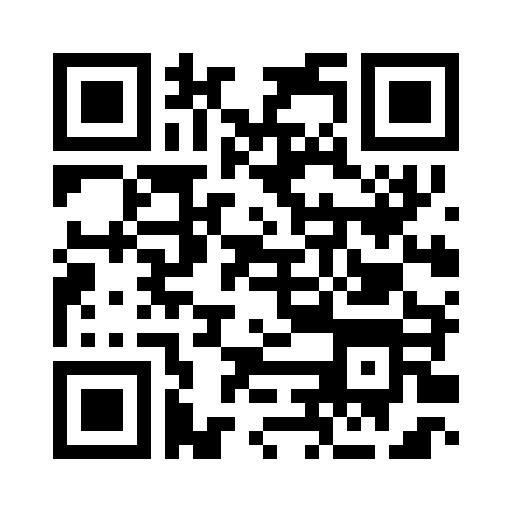
Please do not save seats. Please silence cell phones.

Thank you for coming!
This activity is supported by independent educational grants from AbbVie, Inc.; Bristol Myers Squibb Company; Janssen Biotech, Inc., administered by Janssen Scientific Affairs, LLC; Karyopharm Therapeutics; Pfizer Inc.; and Sanofi.




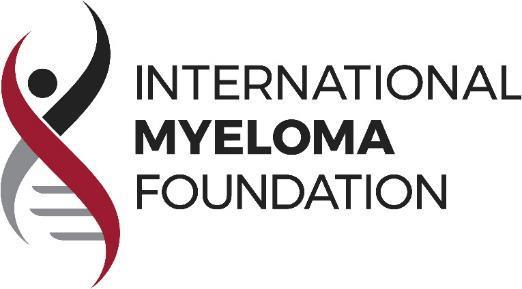
ONS Disclosure
Meeting space has been assigned to provide a Symposium supported by the International Myeloma Foundation during the Oncology
Nursing Society’s (ONS) 49th Annual Congress, April 24 – April 28, 2024, in Washington, D.C. The ONS’s assignment of meeting space does not imply product endorsement.





Accreditation/Certification
Postgraduate Institute for Medicine (PIM) is accredited as a provider of nursing continuing professional development education by the American Nurses Credentialing Center’s Commission on Accreditation.
A maximum of 1.5 contact hours may be earned for successful completion of this activity.





Disclosure of Conflicts of Interest
Postgraduate Institute for Medicine (PIM) requires faculty, planners, and others in control of educational content to disclose all their financial relationships with ineligible companies. All identified conflicts of interest (COI) are thoroughly vetted and mitigated according to PIM policy. The existence or absence of COI for everyone in a position to control educational content will be disclosed to participants prior to the start of each activity.
Please access full disclosures here:
https://imf-ons.myeloma.org/disclosures/










Patient names, demographics, and identifying characteristics have been masked to be HIPAA compliant.

Off label use of drugs may be discussed.




Slides available for download at: https://www.imf ons.myeloma.org








=
Portability and Accountability Act.
HIPAA
Health Insurance
Faculty Introductions

CHAIR







Beth Faiman, PhD, MSN, APRN-BC, AOCN®, BMTCN®, FAAN, FAPO
Cleveland Clinic Taussig Cancer Institute
Member, Population and Cancer Prevention Program, Case Comprehensive Cancer Center
Cleveland, OH
FACULTY
Kevin Brigle, PhD, NP
Massey Comprehensive Cancer Center
Virginia Commonwealth University, Richmond, VA
Donna D. Catamero, ANP-BC, OCN®, CCRC
Mount Sinai Health System
Multiple Translational Research, New York, NY

Patricia A. Mangan, RN, MSN, APRN-BC
Abramson Cancer Center
University of Pennsylvania, Philadelphia, PA

7
Learning Objectives

As a result of this program, you will be able to:
Discuss new and emerging therapies, including CELMoDs®, CAR-T cell therapy, and T-cell engagers, such as bispecific antibodies, for patients with multiple myeloma, as well as AE management and patient education
Explain the importance of sequencing therapy, including the use of multidrug regimens and bridging therapy
Use strategies to support the attainment of deep responses by patients with myeloma, such as new therapies, multidrug regimens, ASCT, maintenance, adherence, shared decision-making, MRD, and other testing
Summarize disparities faced by patients with multiple myeloma and strategies to overcome these (health equity)
Use patient and care partner’s (caregiver’s) input in treatment decisions through shared decision-making

8
AE = adverse event; ASCT = autologous stem cell transplant; CAR = chimeric antigen receptor; CELMoD = cereblon E3 ligase modulatory drug; MRD = minimal residual disease.
Q1. Which of the following is TRUE about multiple myeloma (MM) in Black vs White patients?



1. Black patients tend to be diagnosed with myeloma at an older age
2. Black patients of African descent tend to have higher-risk disease
3. Black patients with MM have similar rates of mortality compared with White patients
4. Black patients may have superior outcomes when treated with standard-of-care
5. I don’t know

9
Q2. Which of the following is TRUE about strategies to attain deep minimal residual disease (MRD) negative responses to treatment in multiple myeloma (MM)?
1. Patients who achieve MRD-negative status do not relapse
2. Multidrug regimens produce higher MRD-negative rates than doublet regimens
3. Autologous stem cell transplant (ASCT) is no longer recommended as a strategy to achieve MRD-negative responses
4. A shorter duration of therapy with higher doses of chemotherapy will lead to deeper MRD-negative response rates
5. I don’t know

10
Q3. Which of the following is TRUE about sequencing and CAR T cell therapy for multiple myeloma (MM ?



1. A new line of therapy is defined as the discontinuation of 1 treatment regimen due to progression and the start of another therapy
2. Patients must have been treated with a proteasome inhibitor (PI) and immunomodulatory drug (IMiD) before CAR T-cell therapy
3. CAR T cell therapies are indicated for patients with MM only after 3 or more prior lines of therapy
4. Patients treated with a bispecific antibody are not eligible to receive CAR T-cell therapy
5. I don’t know

11
Q4. Which of the following is TRUE about bispecific antibody therapies for multiple myeloma (MM)?

1. Skin and nail toxicities are common AEs experienced by patients receiving a BCMA-targeted bispecific antibody
2. Cytokine release syndrome (CRS) can occur in CART-cell therapy but does not occur in patients treated with bispecific antibodies
3. Patients are not eligible for a BCMA-directed bispecific antibody after a BCMA-directed CAR T-cell therapy
4. Atypical infections such as CMV, PJP, and fungal infections may occur at higher rates in patients receiving bispecific therapies for MM compared with standard therapy
5. I don’t know

12





800 452 CURE (2873)
http://myeloma.org


Newly Diagnosed Multiple Myeloma, Including Treatment Disparities
CASE 1: CARL*
*HIPAA-compliant; not actual patient name.

Kevin Brigle, PhD, NP




Beth Faiman, PhD, RN, MSN, APRN BC, AOCN, BMTCN, FAAN






HIPAA = Health Insurance Portability and Accountability Act.
International Myeloma Foundation
CASE 1

CARL* PATIENT NOTES:
• 61-year-old man
• PMH: HTN; prostate cancer treated with XRT 1 year prior
• Back pain, lumbar and thoracic; visited PCP → prescribed NSAIDs
• Pain persisted × 1 week → wife and daughter encouraged him to return to PCP
• Prescribed lidocaine patch and physical therapy
PHYSICAL THERAPY
Started twice-weekly sessions


HIPAA = Health Insurance Portability and Accountability Act; HTN = hypertension; NSAID = nonsteroidal anti-inflammatory drug; PCP = primary care provider; PMH = past medical history; XRT = external beam radiotherapy. compliant, not actual patient name, stock photo.


Myeloma Is a Cancer of Plasma Cells

Bone Marrow of a Patient With MM
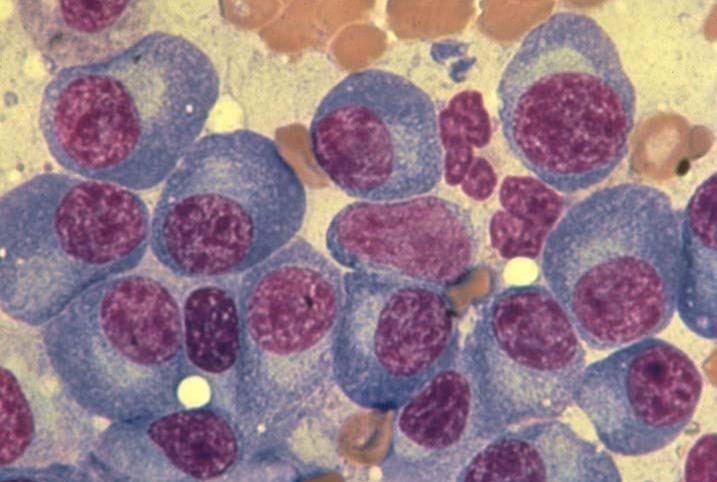

15
RA, et al. Mayo Clin Proc. 2003;78:21-33.
MM = multiple myeloma. Kyle
Image courtesy of American Society of Hematology

Plasma Cells Are Differentiated B Cells That Produce Antibodies
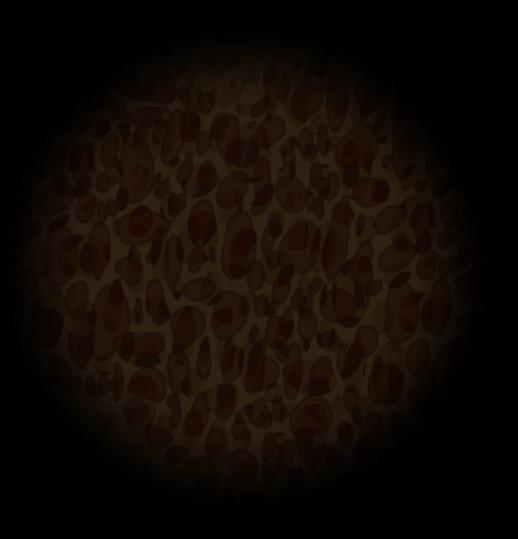
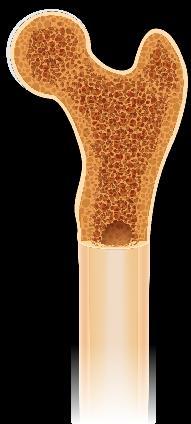






















































B-cell malignancies have characteristics similar to the stages of B-cell development FDC


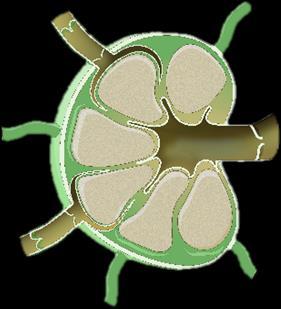

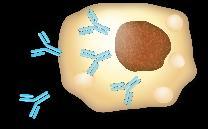




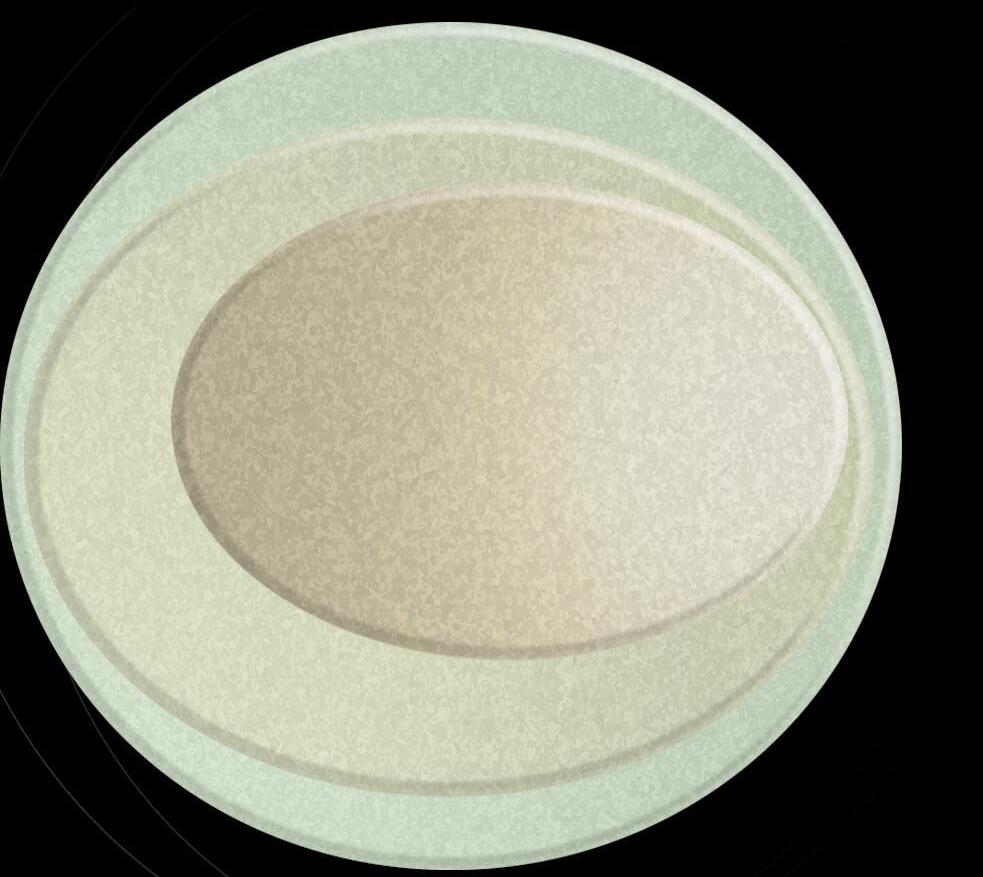
Chronic lymphocytic leukemia (CLL) with unmutated IGHV
Burkitt lymphoma (BL)
Follicular lymphoma (FL)
Diffuse large B-cell lymphoma (DLBCL)
Activated B-cell diffuse large B-cell lymphoma (ABC-DLBCL)
Mantle cell lymphoma (MCL)
Marginal zone lymphoma (MZL)
Chronic lymphocytic leukemia (CLL with mutated IGHV)
Multiple myeloma (MM)
Waldenström macroglobulinemia (WM)

MARGINALZONE MANTLEZONE GERMINALCENTER G C K ONE GC GHT ONE
=
cell; GC = germinal
Singh
al.
stem cell
bone marrow) Immature B cell (in bone marrow) Transitional B cell Mature B cell T cell Plasmablast Plasma cell Memory B cell 6 11 1 3 2 9 Lymph node 5
follicular dendritic
center; IGHV = immunoglobulin heavy chain variable. Pal
S, et
Mol Cancer. 2018;17(1):57. Pasqualucci L. Immunol Rev. 2019;288(1):240-261. Hematopoietic
(in
Pre-B acute lymphoblastic leukemia (ALL)
10 8 4 1 2 3 4 5 6 7 8 9 10 11 Bone 7 B-cell
16
Malignancies
Myeloma Cells Can Produce Myeloma Protein Continually: Detectable in Plasma and Urine


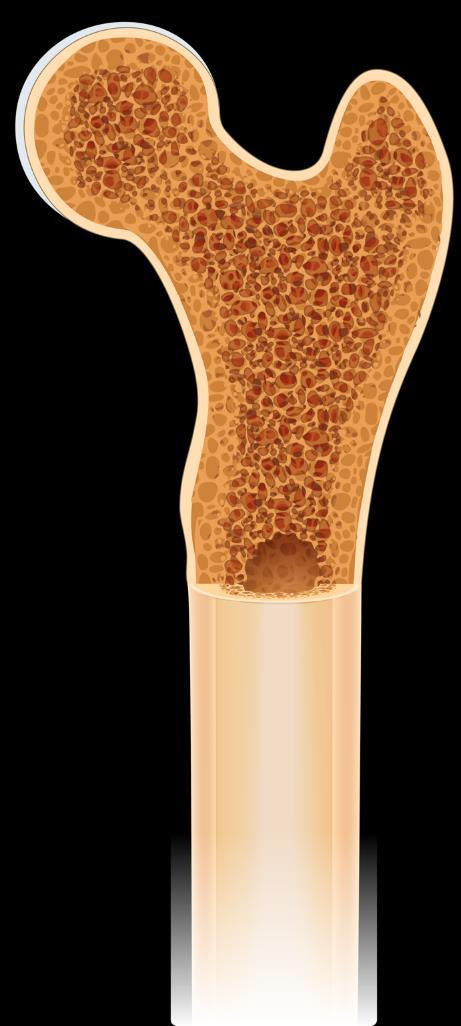


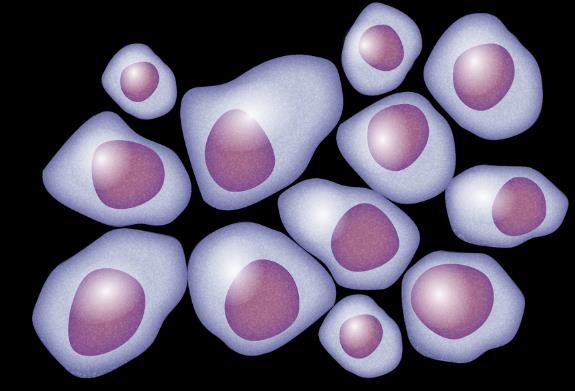




Note: Some patients have nonsecretory disease that does not produce detectable myeloma protein.





17
Understanding Your Test Results, International Myeloma Foundation 2018.
Bone marrow Normal Myeloma Albumin alpha-1 alpha-2 beta gamma Myeloma
Characteristics Put Some People at Higher Risk for MM
Risk Factors
Male
MGUS or other plasma disorder Obesity
MM = multiple myeloma; MGUS = monoclonal gammopathy of undetermined significance.
Environmental or occupational exposures (eg, agent orange)
Plasma Cell Neoplasms (Including Multiple Myeloma) Treatment (PDQ®)–Patient Version - NCI. Published December 9, 2022. Accessed April 1, 2023. https://www.cancer.gov/types/myeloma/patient/myeloma-treatment-pdq. Tariman JD. Multiple myeloma. In: Yarbro CH, Frogge MH, Goodman M, eds. Cancer Nursing: Principles and Practice. Jones and Bartlett Publishers; 2005:1460-1489. Sergentanis TN, et al. Clin Lymphoma Myeloma Leuk. 2015;15(10):563-577.

African
Age Family history of MM
descent
18
Multiple Myeloma Continuum: Premalignant Conditions
ACTIVE MM
CRAB Criteria
Calcium elevation
Renal dysfunction
Low risk
Risk of progression: ≈ 1% per year

Spike on SPEP/UPEP
Abnormal free light test
Bone marrow < 10% PCs
High-risk: likely to progress to active MM within 2 years
M-spike ≥ 2 g/dL
Serum Free Light Chain Assay
(involved/uninvolved ratio ≥ 20)
Bone marrow ≥ 20% PCs
Anemia
Bone lesions


CLINICAL TRIAL

SLiM/MDEs
Bone marrow ≥ 60% PC
Serum Free Light Chain Assay
(involved/uninvolved ratio ≥ 100)
MGRSa TREAT PREMALIGNANT CONDITIONS MONITOR
MRI ≥ 1 focal lesion ≥ 5 mm



aMGRS does not meet criteria for myeloma but has kidney manifestation; kidney biopsy is the gold standard for diagnosis.
CRAB = calcium elevation, renal dysfunction, anemia, bone lesions; M-spike = monoclonal spike; MDE = myeloma-defining event; MGRS = monoclonal gammopathy of renal significance; MGUS = monoclonal gammopathy of undetermined significance; MM = multiple myeloma; MRI = magnetic resonance imaging; PC = plasma clone; SLiM = PC ≥ sixty, light chain, MRI; SMM = smoldering multiple myeloma; SPEP = serum protein electrophoresis; UPEP = urine protein electrophoresis. Rajkumar SV, et al. Lancet Oncol. 2014;15(12):e538-e548. Bridoux F, et al. Kidney Int. 2015;87(4):698-711. Terpos E, et al. Lancet Oncol. 2021;22(3):e119-e130. Hillengass J, et al. Lancet Oncol. 2019;20(6):e302-e312. Ludwig H, et al. Lancet. 2023;58:101910.

MGUS SMM
19
iStopMM Clinical Study: New Insights About MGUS
• 75,422 individuals screened in Iceland via serum sample
• Represents 54% of all Icelanders aged ≥40
• Analysis of study data has provided new insights into MM and related premalignant conditions

• MGUS screening via feasible and leads to early diagnosis and treatment of MM and related disorders
• MGUS screening was not associated with any demonstrable harm
• 4.4% (3,353/75,422) of people had heavy chain MGUS and 0.4% had light chain MGUS
– Increased rates of thrombotic events in patients with MGUS (especially non-IgM MGUS)
• New reference intervals for serum free kappa FLC, lambda FLC, and FLC ratio according to age for patients with preserved kidney function

20
FLC = free light chain; IgM = immunoglobulin M; iStopMM = Iceland Screens Treats or Prevents Multiple Myeloma; MGUS = monoclonal gammopathy of undetermined significance. Rögnvaldsson S, et al. ASH 2023. Abstr #214. Rögnvaldsson S, et al. ASH 2023. Abstr #216. Long TE, et al . ASH 2023. Abstr #535. WATCH FOR New iStopMM results as analyses continue
Multiple Myeloma Continuum: Premalignant Conditions
ACTIVE MM
CRAB Criteria
Calcium elevation
Renal dysfunction
Low risk
Risk of progression: ≈ 1% per year

Spike on SPEP/UPEP
Abnormal free light test
Bone marrow < 10% PCs
High-risk: likely to progress to active MM within 2 years
M-spike ≥ 2 g/dL
Serum Free Light Chain Assay
(involved/uninvolved ratio ≥ 20)
Bone marrow ≥ 20% PCs
Anemia
Bone lesions


CLINICAL TRIAL

SLiM/MDEs
Bone marrow ≥ 60% PC
Serum Free Light Chain Assay
(involved/uninvolved ratio ≥ 100)
MGRSa TREAT PREMALIGNANT CONDITIONS MONITOR
MRI ≥ 1 focal lesion ≥ 5 mm



aMGRS does not meet criteria for myeloma but has kidney manifestation; kidney biopsy is the gold standard for diagnosis.
CRAB = calcium elevation, renal dysfunction, anemia, bone lesions; M-spike = monoclonal spike; MDE = myeloma-defining event; MGRS = monoclonal gammopathy of renal significance; MGUS = monoclonal gammopathy of undetermined significance; MM = multiple myeloma; MRI = magnetic resonance imaging; PC = plasma clone; SLiM = PC ≥ sixty, light chain, MRI; SMM = smoldering multiple myeloma; SPEP = serum protein electrophoresis; UPEP = urine protein electrophoresis. Rajkumar SV, et al. Lancet Oncol. 2014;15(12):e538-e548. Bridoux F, et al. Kidney Int. 2015;87(4):698-711. Terpos E, et al. Lancet Oncol. 2021;22(3):e119-e130. Hillengass J, et al. Lancet Oncol. 2019;20(6):e302-e312. Ludwig H, et al. Lancet. 2023;58:101910.

MGUS SMM
21
How Patients With Myeloma Commonly Present

ROUTINE PHYSICAL
• Patient with few/ no symptoms
• Abnormal bloodwork or test result
VISIT FOR SPECIFIC COMPLAINT
• Bone pain, fatigue, or injury
• Abnormal test result (eg, x-ray, blood test)

EMERGENCY ROOM
• Severe pain—often spinal fractures
• Kidney failure
MEDICAL EMERGENCY; Need immediate treatment! NON-EMERGENCY; More time for shared decision-making


22
Brigle K, et al. J Adv Pract Oncol. 2022;13(suppl 4):7-14. Brigle K, et al. Clin J Oncol Nurs. 2017;21(5 suppl):60-76. Faiman B, et al. J Adv Pract Oncol. 2016;2016:7(suppl 1):17-29. Kurtin S, et al. J Adv Pract Oncol. 2016;7(suppl 1):59-70.
CASE 1

CARL*
PATIENT NOTES:
• Pain worsened and he could only complete 10 days of physical therapy
• Returned to primary care → APP ordered imaging, CBC, CMP, and PSA
• Results suspicious for myeloma and APP ordered SPEP and IFE
• Referral to hematologist-oncologist who ordered full myeloma workup
CBC and CMP
CBC remarkable for low Hgb (10.3 g/dL)
CMP remarkable for elevated calcium (11.7 mg/dL)
Cr 1.1 mg/dL and elevated globulin (6.9 g/dL)
PSA normal at 0.7 ng/mL
SPEP 3.1 g/dL IgG kappa monoclonal protein


APP = advanced practice provider; CBC = complete blood count; CMP = comprehensive metabolic panel; Cr = creatinine; Hgb = hemoglobin; HIPAA = Health Insurance Portability and Accountability Act; IFE = immunofixation electrophoresis; IgG = immunoglobulin G; PSA = prostate-specific antigen; SPEP = serum protein electrophoresis. compliant, not actual patient name, stock photo.


Diagnostic Workup for Multiple Myeloma
LAB TESTS
• Serum protein electrophoresis (SPEP)
• Immunofixation (IFE)
• Urine protein electrophoresis (UPEP)
• CBC + differential, CMP, including albumin, β2 microglobulin, and LDH
• Serum-free light chain assay
• Quantitative immunoglobulins
BONE MARROW BIOPSY
• FISH
• Cytogenetics
• Clonal plasma cell percentage
• Congo red for amyloid
gain(1q)

FISH detects abnormalities in MM cells using fluorescent probes









CBC = complete blood count; CMP = comprehensive metabolic panel; del = deletion; FISH = fluorescence in situ hybridization; FLC = free light chain; LDH = lactate dehydrogenase; MM = multiple myeloma; t = translocation.
Ghobrial IM, et al. Blood. 2014;124:3380-3388. Rajkumar SV, et al. Lancet Oncol. 2014;15:e538-e3548. Faiman






del(17)p




24
B. Clin Lymphoma Myeloma Leuk. 2014;14:436-440.
t(4;14)
Imaging for Multiple Myeloma

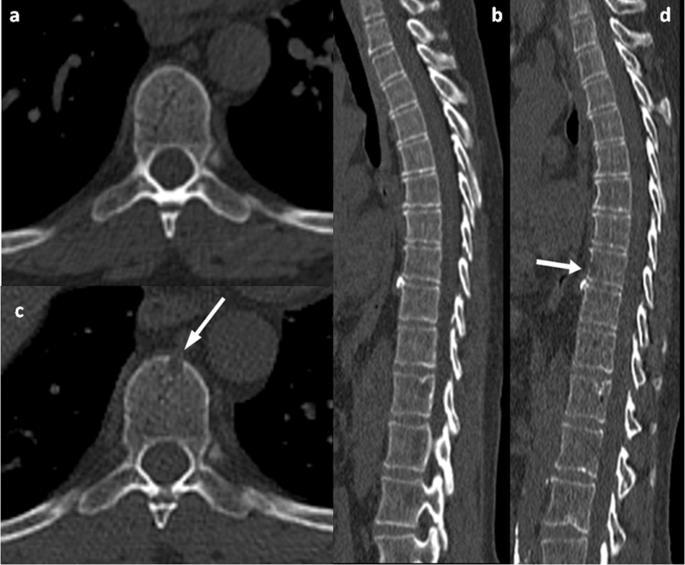
Image: Gavriatopoulou M, et al. Blood Cancer J. 2020;10:93
SEVERAL OPTIONS FOR BONE IMAGING
Whole Body LowDose CT (WBLDCT)
Best for early screening for bone disease
PET-CT MRI Whole body (WB) or spine + pelvis
Response assessment: active residual disease Gold standard to assess bone marrow involvement
Skeletal survey is no longer the standard of care in MM
Bone scan (DEXA) for bone density is not for MM
CT = computed tomography; DEXA = dual-energy x-ray absorptiometry; MM = multiple myeloma; MRI = magnetic resonance imaging; PET = positron emission tomography; WB = whole body; WBLDCT = whole-body low-dose computed tomography.
Brigle

25
K, et al. J Adv Pract Oncol. 2022;13(suppl 4):7-14. Hillengass J, et al. Lancet Oncol. 2019;20(6):e302-e312. Rome SI, et al. Clin J Oncol Nurs. 2017;21(5 suppl):47-59. Faiman B. Clin Lymphoma Myeloma Leuk. 2014;14:436-440. Dimopoulous M, et al. Leukemia. 2009;23(9):1545-1556.
Risk With Multiple Myeloma




No abnormalities detected OR
Abnormalities that are not
defined as high risk
• Trisomies
• t(11;14)
• t(6;14)

Identified by FISH
• t(4;14)a
• t(14;16)
• t(14;20)
• del(17p)
• gain(1q)a
• amp1q
Double hit: any 2 high-risk factors

Triple hit: any 3 high-risk factors
aHigh risk if detected in SMM; intermediate risk in MM according to Rajkumar SV 2022.
del = deletion; FISH = fluorescence in situ hybridization; MM = multiple myeloma; SMM = smoldering multiple myeloma t = translocation.
Rajkumar SV. Am J Hematol. 2022;97(8):1086-1107.

26
STANDARD RISK HIGH RISK


-ISS Staging System for Multiple Myeloma
• ISS stage I (serum B2M level < 3.5 mg/L and serum albumin ≥ 3.5 g/dL)
• No high-risk CA [del(17p) and/or t(4;14) and/or t(14;16)]
• Serum LDH < ULN (varies by institution) 82% 55%
II
• Not R-ISS stage I or III 62% 36%
III
• ISS stage III (serum B2M level > 5.5 mg/L)
• High-risk CA [del(17p) and/or t(14;4) and/or t(14;16)] or high serum LDH 40% 24%
SURVIVAL BETTER WORSE
B2M = β2 microglobulin; CA = chromosomal abnormality; ISS = International Staging System; LDH = lactate dehydrogenase; MM = multiple myeloma; OS = overall survival; PFS = progression-free survival; R-ISS = Revised-ISS; R2-ISS = ISS second revision; ULN = upper limit of normal. Palumbo A, et al. J
Tip: R-ISS calculator
available at https://www.mdcalc.com/ calc/3842/revisedmultiple-myelomainternational-stagingsystem-r-iss
WATCH FOR
Adoption of the proposed revision to RISS: R2-ISS that includes gain 1q risk factor

27
Clin
2015;33:2863-2869. D’Agostino M, et al.
Clin Oncol.
5-YEAR OS 5-YEAR PFS
Oncol.
J
2022;40(29):3406-3418. STAGE R-ISS
I
CASE 1

MYELOMA WORKUP
Bone Marrow
Plasma Cells:
30% kappa restricted
FISH: No abnormalities detected
Blood
Calcium:
11.7 mg/dL (ULN: 10.6 mg/dL)
Albumin: 3.3 mmol/L (LLN: 3.5 mmol/L)
B2M: 4.0 mg/dL (ULN: 2.64 mg/dL)
LDH:
150 U/mL (ULN: 250 U/mL)
Creatinine: 1.1 mg/dL (ULN: 1.3 mg/dL)
Hgb:
10.3 g/dL (normal range: 13.8-17.2 g/dL)
SPEP 3.1 g/dL IgG kappa monoclonal protein
Kappa light chain
250 g/dL (normal range: 3.3-19.4 g/dL)
Lambda light chain 9.8 g/dL (normal range 5.7 to 26.3 g/dL)
κ/λ-light-chain ratio: 25.2 (ULN: 1.65)
Whole Body PET-CT FDG-avid lesions: T10-T12, L2, lateral right ribs; right humerus
Whole Spine MRI T10-T12 lesions, L2 lesion, intact spinal canal


Diagnosis Active MM Stage 2 compliant, not actual patient name, stock photo.
B2M = β2 microglobulin; CT = computed tomography; FDG = 18F-fluorodeoxyglucose; FISH = fluorescence in situ hybridization; GFR = glomerular filtration rate; Hgb = hemoglobin; HIPAA = Health Insurance Portability and Accountability Act; κ/λ = kappa to lambda; κFs = kappa free serum; L = lumbar; LDH = lactate dehydrogenase; LLN = lower limit of normal; MM = multiple myeloma; MRI = magnetic resonance imaging; PET = positron emission tomography; T = thoracic; ULN = upper limit of normal.


IMF: Raising Awareness via Public Service Announcement
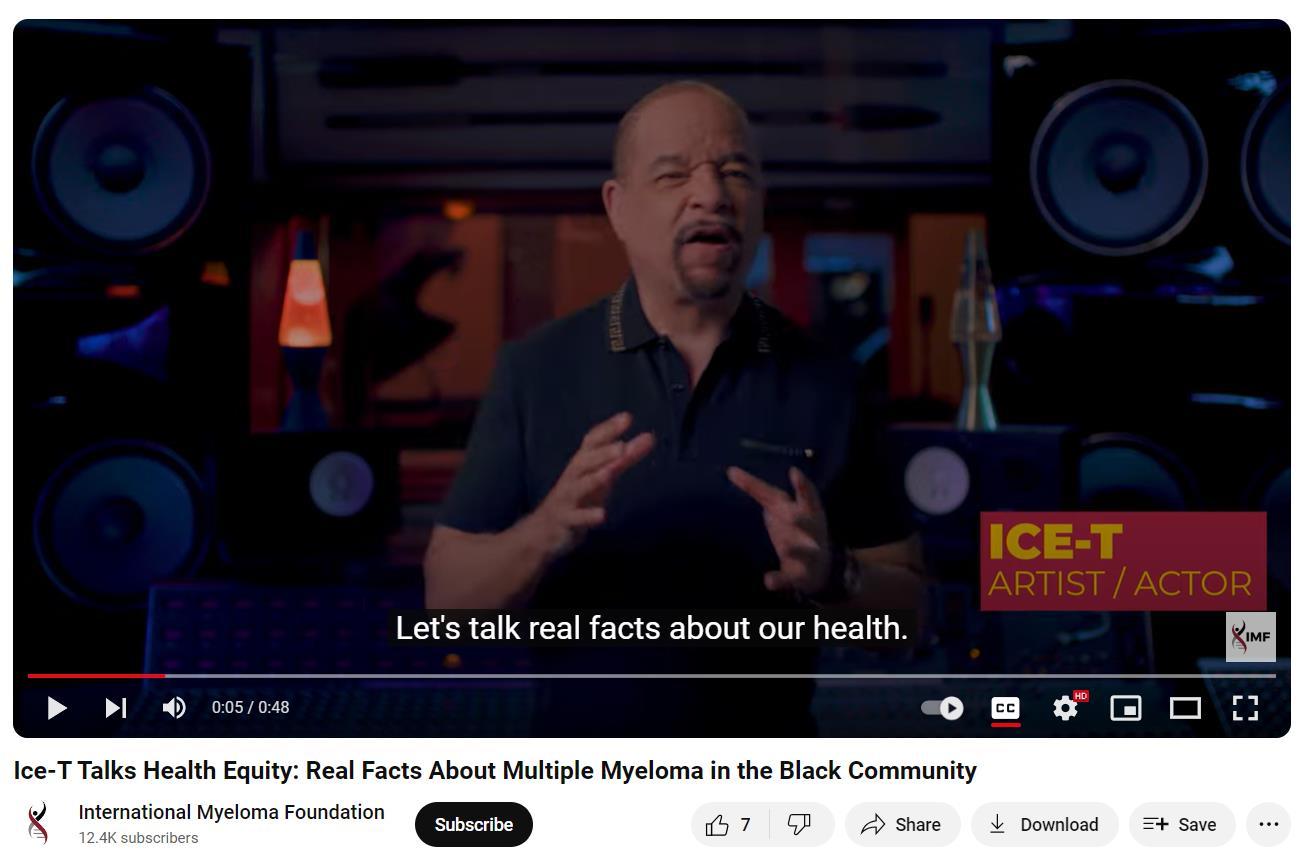
“M
yeloma is among
the
worst of all cancers for delayed diagnosis.” Drayson M, et al. Br J Haematol. 2024;204(2):476-486.
IMF = International Myeloma Foundation. Actor and Artist ICE-T Raises Awareness of Myeloma in the Black Community. IMF website. Accessed April 2, 2024. https://www.myeloma.org/videos/actor-artist-ice-traises-awareness-myeloma-black-community. ICE-T Sets the Record Straight on Multiple Myeloma, It’s Not Melanoma. IMF website. Accessed April 2, 2024. https://www.myeloma.org/videos/psa-2-ice-t-sets-record-straight-multiple-myeloma-its-not-melanoma.

29
Median Age at Diagnosis of MM Varies by Race/Ethnicity







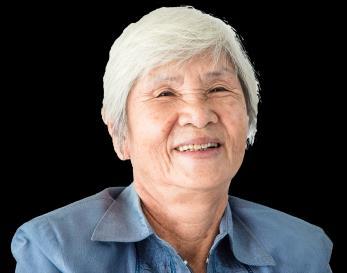



MM = multiple myeloma.
Ailawadhi S, et al. Br J Haematol. 2012;158:91-98. National Cancer Institute. SEER Stat Fact Sheets: Myeloma. Surveillance, Epidemiology, and End Results Program website.
Accessed February 11, 2021. http://seer.cancer.gov/statfacts/html/mulmy.html.

THE MEDIAN AGE AT DIAGNOSIS FOR ALL PATIENTS IS 69 years 65 YEARS 66 YEARS 69 YEARS 71 YEARS 70 Hispanic Patients Black Patients Asian Patients White Patients 30 66 67 68 69 71 72 64 63 62 65
Health Disparities in Multiple Myeloma Among Black Patients

Black patients with MM have more than double the mortality compared with White patients
Black patients are less likely to receive life-extending therapies, such as ASCT, IMiDs, and PIs
Patients of African descent tend to have lower-risk disease due to biologic differences in MM
MM is a malignancy with one of the greatest disparities: 2- to 3-fold higher incidence of MM in Black vs White Americansa
≈ 10% of Black patients have MGUS; MM is the most common blood cancer in Black patients
Black patients tend to achieve better outcomes when they receive equal therapy
ASCT = autologous stem cell transplant; IMiD = immunomodulatory drug; MGUS = monoclonal gammopathy of undetermined significance; MM = multiple myeloma; PI = protease inhibitor.
aData derived by calculating the ratio of the average age-adjusted incidence rates for Black and White patients from 2000 to 2013 for the 8 most common malignancies in Black patients, plus all cancer sites and MM. Incidence rates were obtained from National Cancer Institute. Fast stats. Surveillance, Epidemiology, and End Results Program website. Accessed March 3, 2022. https://seer.cancer.gov/. Dong J, et al. Blood Cancer J. 2022;12(2):34. El-Khoury H, et al. ASH 2021. Abstr #152. Pierre A, Williams TH. Clin J Oncol Nurs. 2020;24(4):439-443. Greenberg AJ, et al. Blood Cancer J. 2015;4:e2713. Baker A, et al. Blood. 2013;12(16):3147-3152. Waxman AJ, et al. Blood. 2010;116(25):5501-5506. Hari PN, et al. Biol Blood Marrow Transplant. 2010;16:395-402. Saraf SL, et al. Bone Marrow Transplant. 2013;48:319-320. Rhotagi N, et al. Am J Clin Oncol. 2007;30(5):540-548. Ailawadhi S, et al. Br J Haematol. 2012;158:91-98. Doroshow D, et al. Ann Oncol. 2020;31:S1204. Hultcrantz M, et al. Blood Cancer Discov. 2020;1:234-243.

31
What Can Nurses Do to Combat Disparities in MM Care?
STRIVE to become aware of potential conscious or unconscious biases
ENGAGE each patient; be aware of cultural differences
BE AWARE of higher rates and earlier age of onset of MGUS and MM in Black patients
ENSURE equal access to centers of excellence and treatments
(eg, ASCT, IMiDs, PIs, clinical trials) and supportive care

ENCOURAGE Black patients with MM to connect with IMF https://mpower.myeloma.org/

FREE patient engagement tools from AHRQ: https://www.ahrq.gov/health-literacy/patient-education/index.html
AHRQ = Agency for Healthcare Research and Quality; ASCT = autologous stem cell transplant; IMiD = immunomodulatory drug; MGUS = monoclonal gammopathy of undetermined significance; MM = multiple myeloma; PI = protease inhibitor. Dong J, et al. Blood Cancer J. 2022;12(2):34. El-Khoury H, et al. ASH 2021. Abstr #152. Pierre A, Williams TH. Clin J Oncol Nurs. 2020;24(4):439-443. Greenberg AJ, et al. Blood Cancer J. 2015;4:e2713. Baker A, et al. Blood. 2013;12(16):3147-3152. Waxman AJ, et al. Blood. 2010;116(25):5501-5506. Hari PN, et al. Biol Blood Marrow Transplant. 2010;16:395-402. Saraf SL, et al. Bone Marrow Transplant. 2013;48:319-320. Rhotagi N, et al. Am J Clin Oncol. 2007;30(5):540-548. Ailawadhi S, et al. Br J Haematol. 2012;158:91-98. Doroshow D, et al. Ann Oncol. 2020;31:S1204. Hultcrantz M, et al. Blood Cancer Discov. 2020;1:234-243. International Myeloma Foundation website. Accessed March 4, 2022. http://www.myeloma.org.

32
CASE 1

CARL*
PATIENT NOTES:
• Felt overwhelmed by cancer diagnosis
• Concerned about side effects of “chemotherapy”
• Concerned about out-of-pocket costs, loss of work, impact on family
• Concerned about long-term survival




HIPAA = Health Insurance Portability and Accountability Act.
compliant, not actual patient name, stock photo.
Knowledge Is Power: Steep Learning Curve for Newly Diagnosed Patients With Multiple Myeloma
• Patient education is crucial but can be overwhelming
• The shock of diagnosis makes understanding and retaining information difficult
– Tell patients, but also give written or electronic information they can refer to
– Engage care partners or extended family
– Focus on crucial information
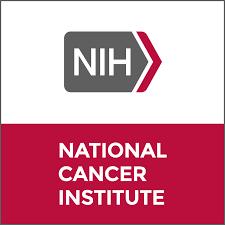
https://www.cancer.gov

https://www.cancer.org

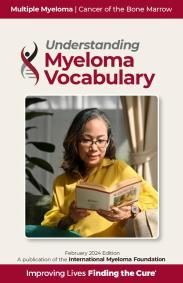

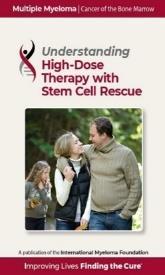
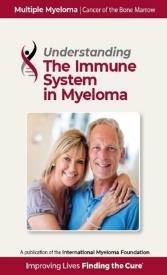

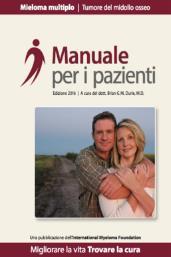
Free Download or Order From myeloma.org
Multiple Languages
IMF Videos


IMF Website
http://myeloma.org




Leukemia & Lymphoma Society
https://www.lls.org

IMF = International Myeloma Foundation.
34
Important Health Protection Education for Newly Diagnosed Patients With Multiple Myeloma

INFECTION PREVENTION

• Ensure handwashing, hygiene
• Growth factor (eg, filgrastim)
• IVIG for hypogammaglobulinemia
• Immunizations (NO live vaccines)
– RSV vaccine
– Shingles vaccine: zoster vaccine recombinant, adjuvanted
– COVID-19 vaccination + booster(s)
– Pneumococcal 20-valent conjugate vaccine
– Seasonal inactivated influenza vaccine (× 2 or high dose)
• Avoid contact with sick people
KIDNEY HEALTH Risks
• Active MM (M-protein, casts)
• High calcium Prevention
• Avoid certain medications (contrast dyes, NSAIDs)
• Hydration Treatment
• Address underlying myeloma causing kidney dysfunction

BONE HEALTH

• Dose adjustments may be needed for reduced kidney function
• Hypercalcemia from bone destruction can affect the kidneys
• ≈ 85% of patients with MM develop bone disease
Monitor
• Report new or worsening bone pain
Medical testing or intervention
• Monitor serum calcium levels
• Imaging may be needed depending on type and location of pain (eg, MRI, PET-CT)
• Bone-modifying agents

CT = computed tomography; IVIG = intravenous immunoglobulin; M-protein = monoclonal protein; MM = multiple myeloma; MRI = magnetic resonance imaging; NSAID = nonsteroidal anti-inflammatory drug; PET = positron emission tomography; RSV = respiratory syncytial virus.
Brigle K, et al. J Adv Pract Oncol. 2022;13(suppl 4):7-14. Hillengass J, et al. Lancet Oncol. 2019;20(6):e302-e312. Faiman B, et al. Clin J Oncol Nurs. 2017;21(5 suppl):19-36. Faiman B, et al. Clin J Oncol Nurs. 2011;15(suppl):66-76. Miceli TS, et al. Clin J Oncol Nurs. 2011;15(4):9-23. Rome SI, et al. Clin J Oncol Nurs. 2017;21(5 suppl):47-59. Dimopoulous M, et al. Leukemia. 2009;23(9):1545-1556. Brigle K, et al. Clin J Oncol Nurs. 2017;21(5 suppl):60-76.

35



Bone Modifying Agents

Recommendation: Bone-strengthening agents should be administered for at least 12 months to all patients with newly diagnosed MM, with or without bone disease
Agent Notes
Zoledronic acid
Denosumab
Pamidronic acid
• Preferred agent
• Also indicated for MM-related hypercalcemia
• PFS and OS benefit
• May also be used, particularly in patients with kidney impairment
• May prolong PFS in patients who are newly diagnosed with MM and are ASCT-eligible
• Discontinuation can be challenging due to rebound effect
• May be used if other agents are not available

36
ASCT = autologous stem cell transplant; MM = multiple myeloma; OS = overall survival; PFS = progression-free survival. Terpos E, et al. Lancet Oncol. 2021;22(3):e119-e130.
Melphalan Prednisone





Autologous Stem Cell Transplant (ASCT)
High-Dose Dexamethasone
Bortezomib
Lenalidomide Thalidomide Doxorubicin
Carfilzomib
Daratumumab
Pomalidomide
Ixazomib Elotuzumab
Denosumab
Selinexor
Daratumumab SC
Isatuximab
Idecabtagene Vicleucel
Ciltacabtagene Autoleucel
Teclistamab-cqyv Talquetamab-tgvs
Elranatamab-bcmm
Anthracycline

2017;52(1):65-81. DRUGS@FDA.gov.
Expanding Treatment Options for Multiple Myeloma: Increasing Importance of Treatment Sequencing CAR = chimeric antigen receptor; IMiD = immunomodulatory drug; SC = subcutaneous; SINE = selective inhibitor of nuclear export. Tariman J. Nurs Clin North Am.
37
2010
NEW Therapies
NEW
NEW
Therapies
Alkylator Steroid Proteasome inhibitor (PI) IMiD 1970 1990 2020 2024
Monoclonal antibody (mAb) SINE inhibitor CAR T-cell therapy Bi-specific antibody
8
7
Therapies 4
Therapies 2 Additional Therapies 2
Motixafortide
Newly Diagnosed MM: Frontline Therapy Sequence
TRANSPLANT CANDIDATE
Standard risk
Induction
Triplet or Quadruplet
PI, IMiD, Anti-CD38, steroid
High risk
Induction
Anti-CD38-based Quadruplet
NOT A TRANSPLANT CANDIDATE
ASCTa
Maintenance
Lenalidomide
Or Clinical Trial
ASCT
Maintenance
Lenalidomide + PI
Or Clinical Trial
Triplet
PI, IMiD, Anti-CD38, steroid
Maintenance
Lenalidomide (standard risk)
Lenalidomide + PI (high risk)
Or Clinical Trial
aASCT may be delayed until first relapse.
ASCT = autologous stem cell transplant; IMiD = immunomodulatory drug; PI = proteosome inhibitor. Rajkumar SV. 2024 Myeloma Algorithm. Accessed March 25, 2024. https://clinicaloptions.com/CE-CME/oncology/2024-mm-algorithm/18440-26989. Rajkumar SV. Am J Hematol. 2022;97(8):1086-1107. NCCN Guidelines®. Multiple Myeloma. V3.2024. Accessed March 15, 2024.

38

Daratumumab: Anti CD38 Monoclonal Antibody


• Monoclonal antibody targeting CD38
– Original IV dosing and SC formulation
• Multiple indications for MM
– See prescribing information for details
• Clinical pearls
– SC dose form for SC only; IV for IV only
– Antibody interference—type and cross BEFORE starting
– Premeds: corticosteroids, antipyretics, antihistamine, and montelukast
– IRR with IV: ≈ 50% (mostly grade 1 and 2, in first or second infusion)
– IRR with SC: ≈ 9%; systemic reactions 10%
– Post-med: oral corticosteroid for 2 days
– Herpes prophylaxis
– Screen for hepatitis titers if HepB core antibody prophylaxis with entecavir
– Remember appropriate prophylaxis for combination partner drugs
– Educate patients/care partners about expectations
SC injection
Dara-Rd, Dara-VMP (First-line non-transplant)
Dara-VTd (First-line transplant eligible)
Dara-Vd, Dara-Pd, Dara-Kd (1-3 prior therapies)
Dara monotherapy (3 prior therapies or refractory to PI and IMiD)
Dara = daratumumab; Kd = carfilzomib dexamethasone; IMiD = immunomodulatory drug; IRR = infusion-related reaction; IV = intravenous; MM = multiple myeloma; Pd = pomalidomide dexamethasone; PI = proteasome inhibitor; Rd = lenalidomide dexamethasone; SC = subcutaneous; Vd = bortezomib dexamethasone; VMP = bortezomib melphalan prednisone; VTd = bortezomib thalidomide dexamethasone.
DARZALEX® (daratumumab) Prescribing Information. DARZALEX FASPRO® (daratumumab and hyaluronidase-fihj) Prescribing Information. Gleason C, et al. J Adv Pract Oncol. 2016;7(suppl 1):53-57.

39

SC Clinical Pearls
INJECTION INTO ABDOMEN

Daratumumab: Anti CD38 Monoclonal Antibody (cont.)


Inject 15 mL into subcutaneous tissue over 3 to 5 minutes 1
Example: 4-week cycle with Rd 3" 3" from navel on right or left side

SC or IV: SCHEDULES DEPEND on
CHECK
IV Clinical Pearls
SLOW FIRST INFUSION
ALTERNATIVE: DIVIDED FIRST INFUSION then FASTER after 1st/2nd dose
Pause or slow if patient experiences pain (9 doses) (5 doses) until progression
DAY 1 and 2 of CYCLE 1: 8 mg/kg

• Injection/infusion becomes less frequent
• If no injection/infusion reaction after 3 doses, consider discontinuing corticosteroid pre/post medications

40
=
Information.
FASPRO® (daratumumab and hyaluronidase-fihj) Prescribing Information.
IV
intravenous; Rd = lenalidomide dexamethasone; SC = subcutaneous. DARZALEX® (daratumumab) Prescribing
DARZALEX
REGIMEN:
PRESCRIBING INFORMATION WEEKS 1-8 WEEKLY WEEKS 9-24 EVERY 2 WEEKS WEEK 25 EVERY 4 WEEKS
2 3 DAY 1 mg/kg8 DAY 2 mg/kg8 ≈7 HOURS
HOURS
3-4






PERSEUS: Phase 3 VRd ± Daratumumab in Transplant Eligible Patients With Newly Diagnosed MM
Multi-drug regimens produce deeper responses
Study Design: Multicenter, Randomized, Open Label
• N = 709 patients with NDMM, aged 18-70 years, ECOG PS ≤ 2
• Randomized to Dara-VRd → ASCT → Dara-VRd → Dara-R → Dara-R (if MRD+) or R (MRD-)
VRd → ASCT → VRd → Dara-R → R
Secondary Endpoints
• Improvements in CR or better rates with Dara-VRd vs VRd across all subgroups
• 64% of patients in Dara-VRd arm + Dara-R maintenance discontinued Dara after reaching sustained MRD negativity per protocol
• OS data immature
– Current mortality rate with Dara-VRd vs VRd: 9.6% vs 12.4% (HR: 0.73)
ASCT = autologous stem cell transplant; CR = complete response; Dara = daratumumab; Dara-R = daratumumab lenalidomide; Dara-VRd = daratumumab bortezomib lenalidomide dexamethasone; ECOG = Eastern Cooperative Oncology Group; HR = hazard ratio; MRD = minimal residual disease; NDMM = newly diagnosed multiple myeloma; OS = overall survival; PD =

progressive disease;
progression-free survival;
lenalidomide; VRd
bortezomib lenalidomide dexamethasone. Sonneveld P, et al. ASH 2023. Abstr #LBA-1. Sonneveld P, et al. N Engl J Med. 2024;390(4):301-313.
Dara-VRd 355 345 335 329 327 322 318 316 313 309 305 302 299 295 286 226 90 11 0 VRd 354 335 321 311 304 297 291 283 278 270 258 247 238 228 219 175 67 13 0 48-mo PFS 84.3% HR for PD or death: 0.42 (95% CI 0.30-0.59; P < .0001) Months Since Randomization PFS (%) Dara-VRd VRd 100 80 60 40 20 0 0 3 6 9 12 15 18 21 24 27 30 33 36 39 42 45 48 51 54 67.7% PFS (Primary Endpoint) 41
PFS =
R =
=
Patients at Risk, n




Real World Data: Dara VRd vs VRd

Study Design: Retrospective Analysis
• N = 1326 patients with NDMM transplant-eligible disease; either standard risk or high risk
Dara-VRd → ASCT → R (std risk) OR PI + IMiD (high risk)
VRd → ASCT → R (std risk) OR PI + IMiD (high risk)
Conclusions
• Response rates improved from post-induction to post-transplant phase
• Median follow-up: Dara-VRd 18 months; VRd 87 months
• MRD assessment is ongoing
• Real-world data on Dara-VRd are generally consistent with clinical trial results
ASCT = autologous stem cell transplant; Dara-R = daratumumab lenalidomide; Dara-VRd = daratumumab bortezomib lenalidomide dexamethasone; IMiD = immunomodulatory drug; MRD = minimal residual disease; NDMM = newly diagnosed multiple myeloma; OS = overall survival; PFS = progression-free survival; PI = proteosome inhibitor; std = standard; VRd = bortezomib lenalidomide dexamethasone.
Joseph NS, et al. ASH 2023. Abstr #647.

42
Outcome Dara-VRd VRd PFS rate, % 1 year 2 years 3 years 4 years 98 93 91 85 93 82 69 61 OS rate, % 1 years 2 years 99 94 97 91

Isatuximab: Anti CD38 Monoclonal Antibody
Safety


WATCH FOR
• IRR (38%): the most-common AR specific to isatuximab
• Isa-Pd common ARs: cytopenias, IRR, infections, dyspnea, GI ARs
Dosing
• Slower first and second infusions
• Weekly for 4 weeks then every 2 weeks
• Discontinue if IRR grade 3 WEEKS 1-4
WEEKLY Then ongoing EVERY 2 WEEKS (4 doses)
New indication(s) for patients with newly diagnosed MM expected this summer
Isa-Kd (1-3 prior therapies)
Clinical Pearls
• IRR protection: premedicate with
Isa-Pd (≥ 2 prior therapies: IMiD and PI)
– Dexamethasone: 40 mg oral or IV (or 20 mg for patients aged ≥ 75 years)
– Acetaminophen: 650 mg to 1000 mg
–
H2 antagonists
– Diphenhydramine: 25 mg to 50 mg oral or IV; IV preferred for at least the first 4 infusions
• Antibody interference—type and cross BEFORE starting
• Prophylaxis for herpes virus and DVT
• No dose adjustments for isatuximab
AR = adverse reaction; dex = dexamethasone; DVT = deep vein thrombosis; GI = gastrointestinal; H = histamine; IMiD = immunomodulatory drug; Isa = isatuximab; IRR = infusion-related reaction; IV = intravenous; Kd = carfilzomib dexamethasone; MM = multiple myeloma; Pd = pomalidomide dexamethasone; PI = proteasome inhibitor.
Wilmoth J, et al. Clin J Oncol Nurs. 2021;25(6):706-712. SARCLISA® (isatuximab) Prescribing Information. Goldschmidt H, et al. ASH 2021. Abstr #463.

43


Isatuximab: IsKia Phase 3 in Patients With Newly Diagnosed MM
WATCH FOR
IMROZ phase 3 clinical trial results in patients with NDMM (non-transplant)
Study Design: Multicenter, Open-Label
• Transplant-eligible NDMM
• N = 302 randomized to Isa-KRd → ASCT → Isa-KRd (n = 151) KRd → ASCT → KRd (n = 151)
Results
• Increase in MRD-negativity rate in patients treated with Isa-KRd observed across all subgroups
Multi-drug regimens produce deeper responses
Gay F, et al. ASH 2023. Abstr #4. Outcome
HRCA defined as presence of del(17p13.1), t(4;14) (p16.3;q32.3), t(14;16) (q32.3q23), gain (1q21) or amp(1q21); 2+ HRCA categorized as very high risk.
amp = amplification; ASCT = autologous stem cell transplant; del = deletion; Isa-KRd = isatuximab carfilzomib lenalidomide dexamethasone; HRCA = high-risk cytogenetic abnormality; Isa = isatuximab; KRd = carfilzomib lenalidomide dexamethasone; MM = multiple myeloma; MRD = minimal residual disease; NDMM = newly diagnosed multiple myeloma; NGS = next-generation sequencing.

44
Isa-KRd (n = 151) KRd (n = 151) MRD negativity, by cytogenic risk (NGS 10-5 cutoff), % 0 HRCAs 1 HRCA 2+ HRCAs 79 78 77 72 65 53 MRD negativity, by cytogenic risk (NGS 10-6 cutoff), % 0 HRCA 1 HRCA 2+ HRCA 65 69 77 48 53 27
Special Considerations With Antibody Therapy
• Potential interference with laboratory tests
– Co-migration of therapeutic antibodies with M-protein: overestimation of M-protein and reduced apparent CR rates
• Solutions
– Awareness
– Laboratory assays to minimize effects (eg, high-resolution mass spectrometry)
Daratumumab, isatuximab, and elotuzumab (to be discussed later)
are all IgG antibodies


45
CR = complete response; IgG = immunoglobulin G; M-protein = monoclonal protein. Mills JR, Murray DL. J Appl Lab Med. 2017;1(4):421-431.

Mass Spectrometry: Coming Soon
• Some centers already have mass spectrometry testing in routine clinical use
• Patients with multiple myeloma can be followed by newer mass spectrometric methods → replaces SPEP and IFE
• Mass spectrometry provides improved specificity in finding M-proteins
• Mass spectrometry provides improved specificity in discriminating between therapeutic monoclonal drugs and m-proteins than other techniques
• Mass spectrometry also has a role in amyloidosis (eg, it has improved accuracy for typing amyloid plaques and has led to the discovery of new types of amyloid)
Mass spectrometry can resolve antibody interference
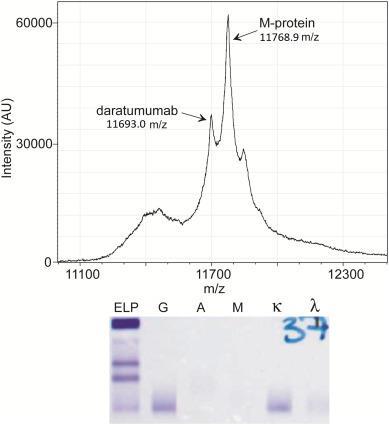
IFE cannot distinguish between therapeutic IgG antibodies and IgG M-protein

46
=
Murray DL, Dasari S. Clin Lab Med.
et al. ACS Chem Neurosci.
IFE
immunofixation electrophoresis; IgG = immunoglobulin G; SPEP = serum protein electrophoresis.
2021;41(2):203-219. Deulofeu M,
2023;14(2):300-311. Moore LM, et al. Clin Chim Acta. 2019;492:91-94.
Maintenance Therapy Recommended for Patients With MM
Multiple clinical studies have confirmed the benefits of maintenance therapy in
• Patients with MM after ASCT
• Patients with MM after induction therapy (delayed transplant)
• Patients with MM after induction (no transplant)
Questions remain
• How long?
• Which drug(s)?
WATCH FOR
New studies that aim to
• Provide new options for maintenance
• Optimize length of maintenance therapy
ASCT = autologous stem cell transplant; HR = hazard ratio; ISS = International Staging System; Len = lenalidomide; NDMM = newly diagnosed multiple myeloma; OS = overall survival; PFS = progression-free survival.
McCarthy

47
Oncol. 2017;35(29):3279-3289. NCCN
March
2024.
PL, et al. J Clin
Guidelines®. Multiple Myeloma. V3.2024. Accessed
15,
Maintenance Therapy Nursing Implications
• Patients on therapy for a long time: AE management, adherence, treatment fatigue, no pregnancy with lenalidomide
– Most common reasons for early discontinuation AEs (56%), patient preference (23%)
• May encounter reimbursement challenges with maintenance therapy (begin authorization early, follow up)
• Short-term vs long-term effects
– Many AEs subside after the first few months
– Health screening related to long-term use
• Patients living longer: survivorship care, coordination with PCP, emphasis on healthy behaviors
• Patient advocacy: understanding patient’s changing needs/desires; advocating with extended health care team
Lenalidomide maintenance:
10 or 15 mg on days 1 to 28 of a 28-day cycle
Lenalidomide + bortezomib
Recommended for high-risk
Bortezomib maintenance: 1.3 mg/m2 every 2 weeks
Ixazomib maintenance: 3 or 4 mg, days 1, 8, and 15 in a 28-day cycle in TOURMALINE-MM3
AE = adverse event; PI = proteasome inhibitor; PCP = primary care provider. Bilotti E, et al. Clin J Oncol Nurs. 2011;15(4 suppl). Kurtin S. In: Tariman JD, et al, eds. Multiple Myeloma: A Textbook for Nurses. 2nd ed. 2015. Dimopoulous MA, et al. Lancet. 2019;393(10168):253-264. NCCN Guidelines®. Multiple Myeloma. V3.2024. Accessed March 15, 2024. Zhang S, et al. Blood Cancer J. 2020;10:33. Rajkumar SV. Am J Hematol. 2022;97(8):1086-1107. Nunnelee J, et al. J Clin Med. 2022 Oct; 11(19): 5794.

48

Iberdomide: CELMoD in Development


Study Design: Phase 2 Iberdomide Maintenance
• Post-ASCT patients with MM treated with iberdomide on days 1 to 21 of 28-day cycle
− 1.0 mg n = 34
− 1.3 mg n = 35
• 14% had high-risk diseasea
Results
• Deepening of responses after 6 months of iberdomide maintenance
• Most common grade 3+ AEs: neutropenia (21% in 1.0 mg cohort and 46% in 1.3 mg cohort), infections (3% and 14%), fatigue/asthenia (12% and 14%)
• No ≥ grade 3 thrombocytopenia, anemia, diarrhea, VTE, or neuropathy
aHigh-risk defined as del(17p), t(4;14), and/or t(14;16).
AE = adverse event; ASCT = autologous stem cell transplant; C6 = cycle 6; CELMoD = cereblon E3 ligase modulatory drug; CR = complete response; MM = multiple myeloma; PR = partial response; sCR = stringent complete response; VGPR = very good partial response; VTE = venous thromboembolism. Van de Donk NWCJ, et al. ASH 2023 #208. RESPONSE IMPROVEMENT AT 6 MONTHS
Arrows show response improvement per category sCR CR VGPR PR Patients (%) Patients (%)

0 10 20 30 40 50 60 70 80 90 100 Screening (n = 35) Response within c6 (n = 35) 0 10 20 30 40 50 60 70 80 90 100 Screening (n = 34) Response within c6 (n = 34) sCR CR VGPR PR n = 4 n = 3 n = 4 n = 20 n = 1 n = 15
49
mg cohort
mg cohort n = 6 n = 24 n = 1 n = 18 n = 13 n = 1 n = 5 n = 5 n = 16
= 2 n = 2 n = 10 n = 1
= 3
= 8
= 3
1.3
1
n
n
n
n



SHARE Approach to Shared Decision Making

Benefits to Healthcare Professionals
• Improved quality of care delivered
• Increased patient satisfaction
Benefits to Patients
• Improved patient experience of care
• Improved patient adherence to treatment recommendations using the SHARE Approach builds a trusting and lasting relationship between healthcare professionals and patients

FREE professional education and training
https://www.ahrq.gov/healthliteracy/professional-training/index.html

50
Agency for Healthcare Research and Quality website. Accessed March 25, 2024. https://www.ahrq.gov/health-literacy/professional-training/shared-decision/index.html.
CASE 1

CARL*
• Shared decision-making:
– Treatment goals discussion
– Explore treatment options:
• Clinical trial options
• Treatment risk vs benefit
• Side effects
– Priorities and preferences


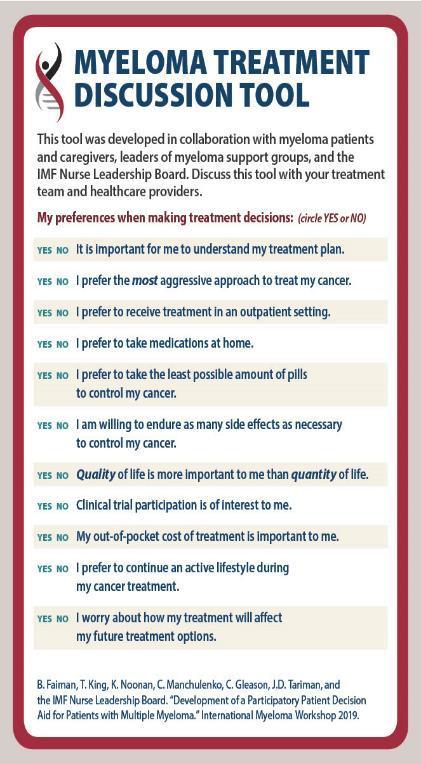
HIPPA = Health Insurance Portability and Accountability Act; IMF = International Myeloma Foundation.
IMF Myeloma Treatment Discussion Tool. Accessed March 28, 2023.
https://m-powercharlotte.myeloma.org/wp-content/uploads/Myeloma-Treatment-Discussion-Tool.pdf.

– Agree on a treatment plan compliant, not actual patient name, stock photo.

CASE 1

CARL*
TREATMENT
Dara-VRd Shared decision-making
Remember:
✓ Shingles prevention
✓ DVT prophylaxis
✓ Monitor sugars
ASCT
Referral for consult with transplant center

MAINTENANCE Planned: R or clinical trial


ASCT = autologous stem cell transplant; Dara = daratumumab; DVT = deep vein thrombosis; HIPAA = Health Insurance Portability and Accountability Act; Dara-VRd = daratumumab bortezomib lenalidomide dexamethasone. R = lenalidomide.

compliant, not actual patient name, stock photo.

How Well Treatment Is Working: IMWG Myeloma Response and Relapse Criteria Assessment

CR
CR: myeloma protein undetectable in serum or urine (negative immunofixation); no more than 5% plasma cells in bone marrow; no new lytic lesions; plasmacytomas resolved
VGPR 90% reduction in myeloma protein
PR At least 50% reduction in myeloma protein
Further categorization of CR: sCR, MRD-negative
For Nurses:
✓ Order labs regularly
✓ Encourage patients to know who is monitoring
✓ Monitor for relapse
–
MR SD PD
CR = complete response; CRAB = calcium elevation, renal dysfunction, anemia, bone lesions; IMWG = International Myeloma Worki response (only in relapsed); MRD = minimal residual disease; PD = progressive disease; PR = partial response; sCR = stringent response.
Palumbo A, et al; International Myeloma Working Group. J Clin Oncol.
2014;32:587-600. Durie BM, et al; International Myeloma Working Group. al. Lancet Oncol. 2016;17(8):e328-e346.
CRAB symptoms OR increase of 25% in M-protein from the lowest point



No Detectable MRD Is Predictive of Better Outcomes


The FDA ODAC committee voted unanimously on April 12, 2024 that data supports the use of MRD as an endpoint for accelerated approval of new treatments for MM Newly diagnosed
ASCT = autologous stem cell transplant; CR = complete response; MRD = minimal residual disease. Kumar S, et al. Lancet Oncol. 2016;17(8):e328-e346. Medina-Herrera A, et al. Cancers (Basel). 2023;15(14):3687.
Key concept:
Deeper responses (less residual disease) generally means better patient outcomes
MANY ways to get to deeper responses:
• Multidrug regimens
• ASCT
• Longer therapy duration (eg, continuous regimens or maintenance)
• New therapies that produce deep responses

54
×
8
×
CR Cure? 0.0 MRD Increasing depth of response 1 × 10-6
1 × 1012 1
10
1
10-4 CR Stringent CR Molecular/Flow

MRD Testing
Role of the Nurse in MRD Testing:
The Why, When, How, and What

WHY?
WHEN?
HOW?
WHAT DO THE TESTS MEAN FOR PATIENTS?
ASCT = autologous stem cell transplant; FDA = US Food and Drug Administration; MRD = minimal residual disease; VGPR = very good partial response.
• Predict outcomes
• Support treatment decisions?
• VGPR or better
• Often prior to transplant or cellular therapy
• Often retest at set intervals (eg, every 6 months or annually)
• ClonoSEQ—FDA cleared for diagnostic use
• Within a clinical trial protocol
• Nice-to-know vs need-to-know information
Munshi N, et al. Blood Adv. 2020;4(23):5988-5999. ClonoSEQ website. Accessed March 15, 20224. https://www.clonoseq.com/. ClonoSEQ® [technical summary]. Seattle, WA.
Adaptive Biotechnologies; 2020. Accessed March 23, 2024. https://www.clonoseq.com/technical-summary/.

55
Total Clonal Cells/Total Nucleated Cells 1 10-1 10-2 10-3 10-4 10-5 10-6 Collection Date Dec 2021 June 2022 Dec 2022 June 2023 Dec 2023 ClonoSEQ MRD Results
Consider Frailty of Patients With MM and Individualize Care
Fitness evaluation Adapted treatment
Online myeloma frailty score calculator at http://www.myelomafrailtyscorecalculator.net/
Calculates frailty score based on age, comorbidities, and ability to manage daily activities


• Consider the appropriateness of ASCT
• Dose adjustments for tolerability (eg, low-dose dexamethasone)
• Anti-CD38 mAb-containing regimens or reduced intensity regimens like RVD-lite
• Proactive AE management to avoid disability and downward spiral
AE = adverse event; ASCT = autologous stem cell transplant; mAb = monoclonal antibody; RVD = lenalidomide bortezomib dexamethasone. Grant SJ, et al. Hematology Am Soc Hematol Educ Program (2021). 2021(1):46-54. O’ Donnell EK, et al. Br J Haematol. 2018;182(2):222-230.Palumbo A, et al. Blood.
2015;125(13):2068-2074. International Myeloma Working Group. Myeloma Frailty Score Calculator. Accessed April 5, 2024. http://www.myelomafrailtyscorecalculator.net/

56
Score Patients (%) 3-Year Survival (%) Treatment Discontinuation (%) 0 (fit) 39 84 17 1 (intermediate) 31 76 22 ≥ 2 (frail) 31 57 25




Frailty Spiral: MM May Accelerate Age related Physiological Decompensation
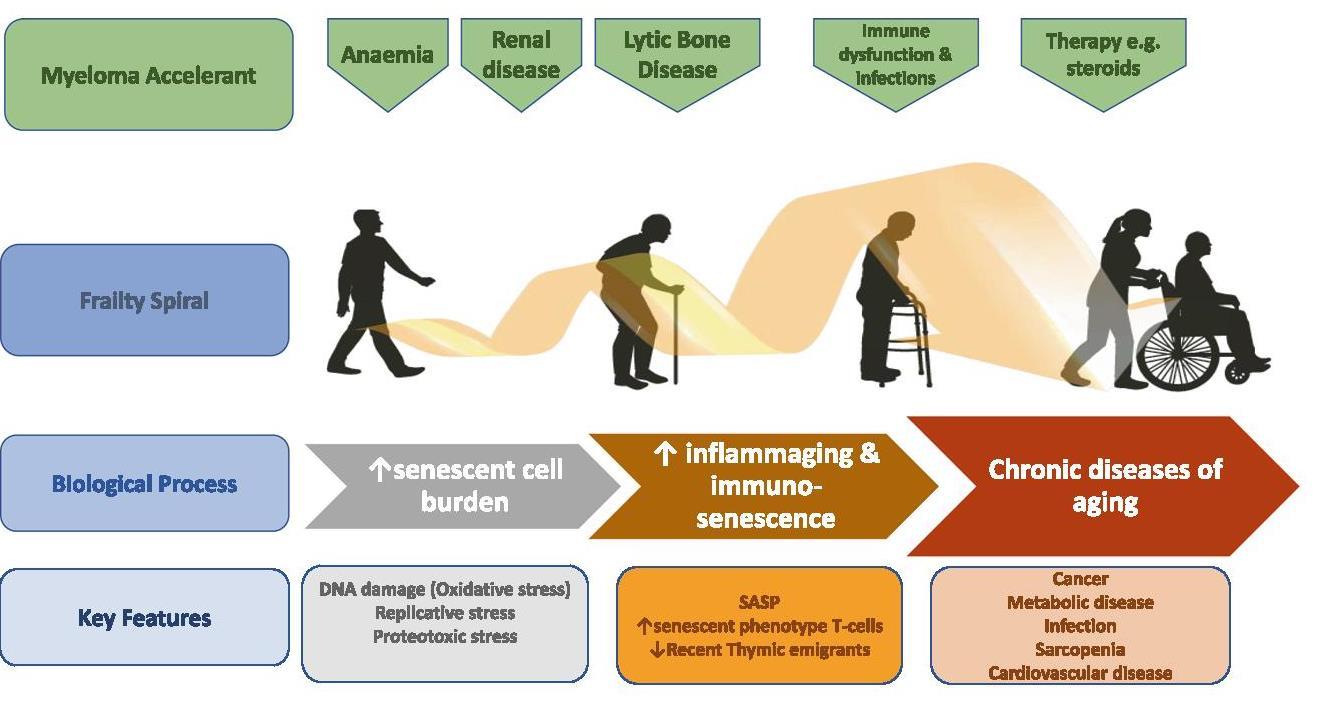

57
Cook G, et al. Leukemia. 2020;34(9):2285-2294.
Survivorship Care Plans Are Important and Recommended for Each Survivor


National Academy of Medicine Recommendation:
A Survivorship Care Plan for Each Survivor
• Record of care
– Diagnosis, including diagnostic tests and results
– Treatments received, total dosage, responses, toxicities
– Other supportive services (psychosocial, etc)
– Contact information for key providers
– Point of contact for continuing care
• Follow-up plan
– Ongoing health maintenance therapy/testing
–
Recommended screenings
– Late/Long-term effects of treatments
– Recommendations/Resources for healthy behaviors, support, etc

58
PCP = primary care provider. Institute of Medicine. Cancer Survivorship Care Planning. Fact Sheet Nov 2005. Accessed March 17, 2023. https://apos-society.org/wp-content/uploads/2016/06/factsheetcareplanning.pdf. Salz T, et al. Cancer. 2014;120(5):722-730. Bilotti E, et al. Clin J Oncol Nurs. 2011;15(4 suppl):25-40. Kurtin S. In: Tariman JD, et al, eds. Multiple Myeloma: A Textbook for Nurses. 2nd ed. 2015.
Summary

MM is a cancer of the plasma cells. Active MM, defined by CRAB criteria and/or myelomadefining events (SLiM), requires treatment.
MGUS and SMM are premalignant conditions associated with MM.
Frontline multidrug regimens including those containing an anti-CD38 antibody produce deep responses and are becoming standard of care.
The workup for MM includes laboratory blood work, genetic testing (bone marrow biopsy), and imaging for bone involvement.
Maintenance treatment is recommended for all patients (both transplant eligible and ineligible) with MM.
Disparities exist among patients with MM. Black patients tend to have lower-risk disease and can achieve superior outcomes when treated with standard of care. Nurses are important to reducing disparities.
Nurses can support shared decision-making by using the SHARE model and encouraging patients to discuss their priorities and preferences with the healthcare team.
CRAB = calcium elevation, renal dysfunction, anemia, bone lesions; MGUS = monoclonal gammopathy of undetermined significance; MM = multiple myeloma; SLiM = plasma clones ≥ sixty percent, light chain ratio, focal lesions by MRI; SMM = smoldering multiple myeloma. Kyle RA, et al. Mayo Clin Proc. 2003;78:21-33. Greenberg AJ, et al. Blood Cancer J. 2015;4:e271. Baker A, et al. Blood. 2013;12(16):3147-3152. Brigle K, et al. J Adv Pract Oncol. 2022;13(suppl 4):7-14. NCCN Guidelines®. Multiple Myeloma. V3.2024. Accessed March 15, 2024. O’Donnell EK, et al. Blood. 2019;134(suppl 1):3178. Pierre A, Williams TH. Clin J Oncol Nurs. 2020;24(4):439443. O’Donnell EK, et al. Br J Haematol. 2018;182(2):222-230. Gerber L. Nursing. 2018;48(4):55-58. Agency for Healthcare Research and Quality website. Accessed March 25, 2024. https://www.ahrq.gov/health-literacy/professional-training/shared-decision/index.html.

59
International Myeloma Foundation



Relapsed Multiple Myeloma

CASE 2: Margaret*






800 452 CURE (2873)
http://myeloma.org





*HIPAA compliant; not actual patient names.






Patricia A. Mangan, RN, MSN, APRN BC


Beth Faiman, PhD, RN, MSN, APRN BC, AOCN, BMTCN, FAAN



HIPAA = Health Insurance Portability and Accountability Act.
Patients With Multiple Myeloma Are Living Longer Than Ever
Many patients are living 10+ YEARS after their diagnosis!
Particularly those who are younger and/or have standard-risk disease

61
Rajkumar SV. Am J Hematology. 2022;97(8):1086-1107. SEER Cancer Stat Facts: Myeloma. Accessed March 19, 2024. https://seer.cancer.gov/statfacts/html/mulmy.html. 0 10 20 30 40 50 60 70 80 90 1975 2000 2014 5Year Survival Percentage Year ≈ 60% LIVE MORE THAN 5
YEARS after their diagnosis
Clonal Evolution: The Relapsing Nature of Multiple Myeloma as Dominant Clones Change Over Time


M-protein = monoclonal protein; MGUS = monoclonal gammopathy of undetermined significance; misc = miscellaneous (no dominant clone); MM = multiple myeloma; SMM = smoldering multiple myeloma.
Adapted from Durie B. Keats JJ, et al. Blood. 2012;120(5):1067-1076.

62
Clone 2.2
Change Over Time Clone 2.1 Clone 1.2 Clone 1.1 Misc MProtein g/L 2 5 10 Time First-Line Therapy Second-Line Therapy ≥ Third-Line Therapy
Dominant MM Clones

Some Patients (≈ 17%) Do Not Relapse After Their First Treatment for MM MM =
Mayo Clinic Follow-Up of 2125 Patients With MM at ≥ 10 Years
≈ 17% of long-term survivors of MM may represent patients “operationally cured”

0 20 40 60 80 100 10 12 14 Percent Surviving Time
Diagnosis (years) 63
From
multiple myeloma; Rx = prescription. Grieb B, et al. ASH 2018. Abstr #1912.
5-year remission off Rx
5-year remission on maintenance
≥
≥
How Patients With Myeloma Relapse

Myeloma Protein
Asymptomatic Biochemical Relapse
• Sequentially rising myeloma protein or free light chain (> 25% increase from low point)
• No other symptoms
• Decisions: if, when, how to treat
Symptomatic
• New or worsening bone pain
• Increasing fatigue, anemia

• Next step: relapse workup; many therapy choices
find their first relapse harder than their initial diagnosis.
Nurses are essential for supporting patients!

64
Noonan K, et al. J Adv Pract Oncol. 2022;13(suppl 4):15-21. Faiman B, et al. J Adv Pract Oncol. 2016:7(suppl 1):17-29. Kurtin S, et al. J Adv Pract Oncol. 2016;7(suppl 1):59-70. Gerber L. Nursing. 2018;48(4):55-58.
CASE 2
*HIPAA-compliant, not actual patient name, stock photo.

MARGARET*

PATIENT NOTES

63-year-old woman diagnosed with MM in 2016
High risk: del 17p
RVd → ASCT → R maintenance


November 2018 • 65 years old, biochemical relapse – Light chains increasing > 25% above the lowest point

ASCT = autologous stem cell transplant; HIPAA = Health Insurance Portability and Accountability Act; MM = multiple myeloma; R = lenalidomide; RVd = lenalidomide bortezomib 65
65 ASCT = autologous stem cell transplant; HIPAA = Health Insurance Portability and Accountability Act; M-protein = monoclonal protein; MM = multiple myeloma; R = lenalidomide; RVd = lenalidomide bortezomib dexamethasone.
Relapse Workup

• CBC + differential + chemistry (metabolic panel)
LAB TESTS
• Serum free light chain (FLC) assay
• Serum protein electrophoresis (SPEP)
• Urine protein electrophoresis (UPEP)
CONSIDER BONE MARROW BIOPSY
Cytogenetics and FISH
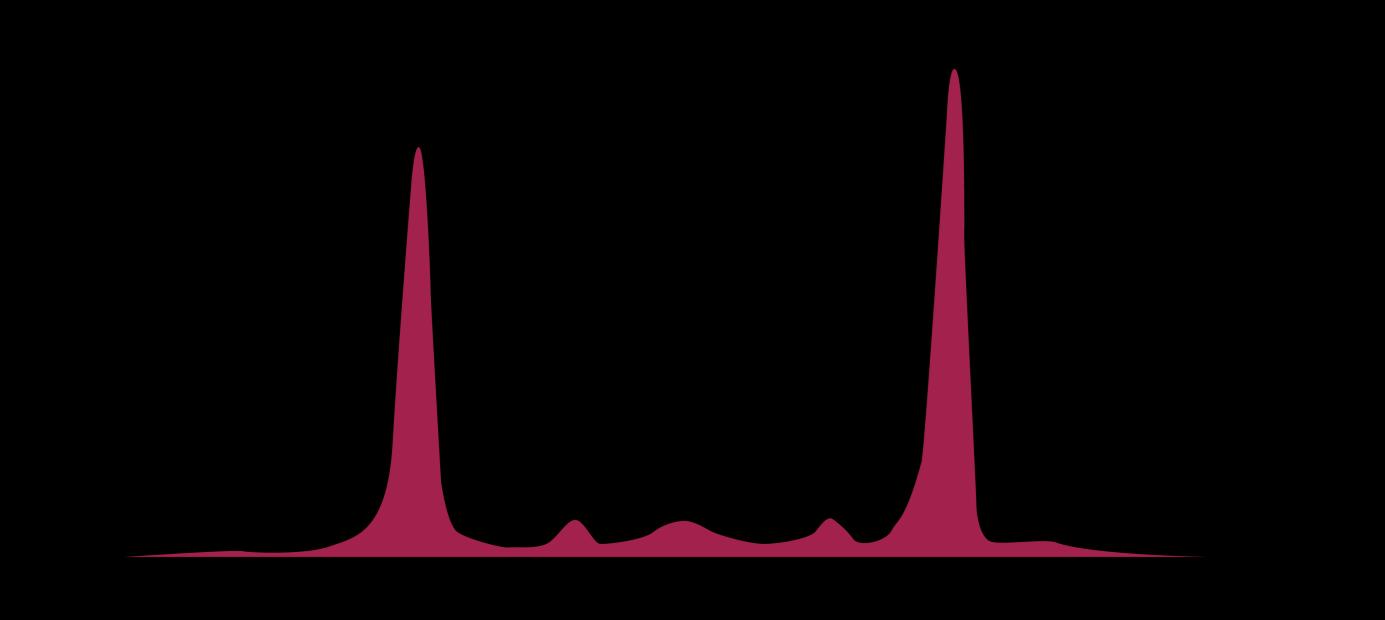
Albumin
alpha-1 alpha-2 beta gamma
IMAGING
• PET/CT
• WBLDCT
• MRI Imaging type depends on individual’s symptoms and available testing options
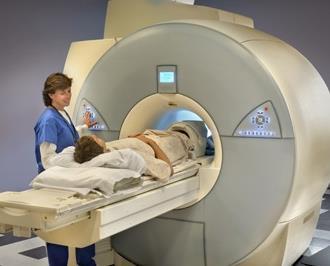
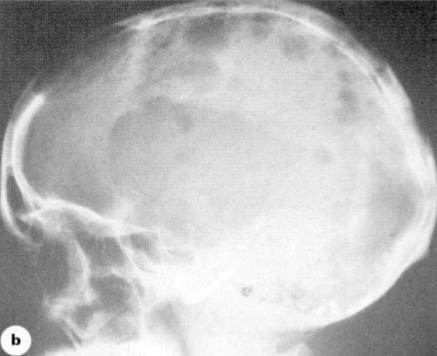
CBC = complete blood count; CT = computed tomography; FISH = fluorescence in situ hybridization; FLC = free light chain; MRI = magnetic resonance imaging; PET = positron emission tomography; SPEP = serum protein electrophoresis; UPEP = urine protein electrophoresis; WBLDCT = whole-body low-dose computed tomography. Noonan K, et al. J Adv Pract Oncol. 2022;13(suppl 4):15-21. Rome SI, et al. Clin J Oncol Nurs. 2017;21(5 suppl):47-59. Hillengass J, et. Lancet Oncol. 2019;20(6):e302-e312. Ghobrial IM, et al. Blood. 2014;124:3380-3388. Rajkumar SV, et al. Lancet Oncol. 2014;15:e538-e548. Faiman B. Clin Lymphoma Myeloma Leuk. 2014;14:436-440.

66
Practical Approach to the Treatment of Patients With Relapsed Myeloma

Disease-Related Factors
• Duration of response to initial therapy
• High-risk vs low-risk status
• Molecular relapse vs symptomatic relapse
• Other comorbid conditions, patient frailty
Treatment-Related Factors
• Previous/Current therapy exposure and response (relapsed vs refractory)
• Toxicity/Tolerability of the previous regimen
• Mode of administration (ie, PO or IV)
• Cost and convenience (out-of-pocket co-pays for IV vs PO)
• Patient preference

67
IV = intravenous;
Noonan K, et al. J Adv Pract Oncol. 2022;13(suppl 4):15-21. Faiman B, et al. J Adv Pract Oncol. 2016;2016:7(suppl 1):17-29. 67
PO = by mouth.
Many Treatment Options at Early Relapse

(1 3 Prior Therapies):


FDA-Approved
Myeloma Therapies Common Combinations
Bortezomib (SQ admin) VRd, Vd, VCd
Carfilzomib KRd, Kd, Dara-Kd, Isa-Kd
Ciltacabtagene Autoleucel --
Daratumumab
Dara-Rd, Dara-Vd, Dara-Pd, Dara-VMp, Dara-Kd
Elotuzumab ERd, EPda
Idecabtagene Vicleucela --
Isatuximab
Isa-Pda , Isa-Kd
Ixazomib IRd
Lenalidomide
VRd, Rd, KRd, Dara-Rd, ERd, IRd
Pomalidomidea Pda , Dara-Pd, EPda , PCdb
Selinexor Xd, XVd, XKdb, Dara-Xdb
New agents or regimens in clinical trials are always an option
a2 or more prior therapies. bOff-label; not currently FDA-approved.

WATCH FOR
Evolving treatment paradigms:
New data are constantly informing best practices. Resistance to lenalidomide and/or anti-CD38 informs treatment sequencing
C = cyclophosphamide; d = dexamethasone; Dara = daratumumab; FDA = US Food and Drug Administration; E = elotuzumab; Isa = isatuximab; I = ixazomib; K = carfilzomib; M = melphalan; p = prednisone; P = pomalidomide; R = lenalidomide; SQ = subcutaneous; V = bortezomib; X = selinexor. Rajkumar SV. 2024 Myeloma Algorithm. https://clinicaloptions.com/CE-CME/oncology/2024-mm-algorithm/18440-26989. Accessed March 25, 2024. NCCN Guidelines®. Multiple Myeloma. V3.2024. Accessed March 15, 2024. Noonan K, et al. J Adv Pract Oncol. 2022;13(suppl 4):15-21. Steinbach M, et al. J Adv Pract Oncol. 2022;13(suppl 4):23-30. Moreau P, et al. Lancet Oncol. 2021;22(3):e105-e118. O’Donnell EK, et al. Br J Haematol. 2018;182(2):222-230. Mo CC, et al. EJHaem. 2023;4(3):792-810.

68
Guidelines For Counting Lines of Therapy in Myeloma
Definition of New Line of Therapy Comment
Discontinuation of 1 treatment regimen and start of anothera
The reasons for discontinuation, addition, substitution, or SCT do not influence how lines are counted. It is recognized that reasons for change may include end of planned therapy, toxicity, progression, lack of response, inadequate response, etc.
Unplanned addition or substitution of 1 or more drugs in a regimen
In patients undergoing >1 SCT, each SCT (autologous or allogeneic) is considered a new line of therapy
Note that a planned tandem SCT is an exception and is considered 1 line. Planned induction and/or consolidation, maintenance with any SCT (frontline, relapse, autologous or allogeneic) is considered 1 line.
aA discontinued regimen restarted at a later date will be counted as a new line of therapy if there were 1 or more other regimens administered in between. Restarting the same regimen (even with dose modifications) without any other intervening regimen is not considered a new line.
VRd→ASCT→R maintenance

VRd→R maintenance

VRd (insufficient response)

Dara-Kd Elo added to R


ASCT (delayed) + maintenance

Bispecific CAR-T Bridging

Dara-Pd Clinical trial (discontinued due to AEs)

Dara added to VRd → maintenance clinical trial

69
Rajkumar SV, et al. Blood. 2015;126(7):921-922.
Carfilzomib Clinical Pearls

IV Proteasome Inhibitor
• Active in bortezomib refractory; common agent in regimens for MM, including trials
• Dosing
– Premedication with dexamethasone
– Hydration but not overhydration
– First dose @ 20 mg/m2 then escalate
– Dose-dependent 10-min or 30-min infusion
• Full anticoagulation, especially for patients with high risk of VTE
• Herpesvirus prophylaxis
• Diuretic (furosemide or torsemide) or inhalers if needed
a1 to 3 prior lines of therapy for Dara-Kd, KRd, or Kd.
• Know cardiac and pulmonary status
– Optimize heart failure and blood pressure management
• Monitor
– Blood counts
– Response
– Signs of infection
• TIP: Avoid dyspnea over the weekend: start new patients’ first dose early in the week
• Patient education
Kd or Dara-Kd
≥ 1 prior linea 20/70 mg/m2
Once weekly 30-min infusion
Kd, Dara-Kd, K
≥ 1 prior linea 20/56 mg/m2
Twice weekly 30-min infusion
KRd or K
≥ 1 prior linea 20/27 mg/m2
Twice weekly 10-min infusion
Dara = daratumumb; IV = intravenous; K = carfilzomib; Kd = carfilzomib dexamethasone; KRd = carfilzomib lenalidomide dexamethasone; MM = multiple myeloma; Rd = lenalidomide dexamethasone; VTE = venous thromboembolism. KYPROLIS® (carfilzomib)

70
Prescribing Information. Stewart K, et al. N Engl J Med. 2015;372:142-152.
IMPEDE VTE Score Can Assess VTE Risk in Patients With Multiple Myeloma

IMPEDE VTE Score
…the IMPEDE VTE score outperformed IMWG guidelines and NCCN Guidelines® and could be considered the new risk stratification standard for VTE in MM
IMWG = International Myeloma Working Group; LWMH = low molecular weight heparin; MM = multiple myeloma; NCCN = National Compr
VTE = venous thromboembolism.
Sanfilippo KM, et al. Am J Hematol. 2019;94(11):1176-1184.


Predictor Acronym Score Immunomodulatory Drug I 4 Body Mass Index ≥ 25 kg/m2 M 1 Pelvic, Hip or Femur Fracture P 4 Erythropoiesis-stimulating Agent E Doxorubicin D Dexamethasone High-Dose Low-Dose Ethnicity/Race = Asian/Pacific Islander E History of Venous Thromboembolism before MM V Tunneled Line Central Venous Catheter T Existing Thromboprophylaxis: Therapeutic LMWH or Warfarin E Existing Thromboprophylaxis: Prophylactic LMWH or Aspirin

Consider Full Anticoagulation for Patients on Carfilzomib Regimens
Tip: rivaroxaban co-pay may be covered by an LLS grant or other cancer-related assistance IF indicated that it is necessary for myeloma treatment
Rivaroxaban may be a more-effective antithrombotic agent for patients receiving carfilzomib- or lenalidomidebased regimens
AE = adverse event; ASA = aspirin; KRd = carfilzomib lenalidomide dexamethasone; LLS = Leukemia & Lymphoma Society; VRd = bortezomib lenalidomide dexamethasone; VTE = venous thromboembolism.

72
Piedra KM, et al. ASH 2019. Abstr #1835. 4.0% 16.5% 2.2% 1.0% 5.2% 2.2% 0% 4% 8% 12% 16% 20%
+
+
KRd
VTE
VRd
ASA KRd
ASA
+ rivaroxaban
Bleed
With the Indicated AE
Percent
Pomalidomide Clinical Pearls

Oral Immunomodulatory Agent
• Active in R-refractory patients; common agent in regimens for MM, including trials
• Monitor
– Blood counts—neutropenia most frequent grade 3/4 AE
– Liver function
– Response
• REMS program
• Proactive AE management
• Patient education
– Oral adherence
– REMS process for refills
– DVT prophylaxis
– Common AEs: low blood counts, infection, GI
– Refrain from smoking (reduces pomalidomide exposure)
– Protect renal health (renal excretion of pomalidomide)
• Hydration
• Avoid NSAIDS, IV contrast, other drugs with renal interactions
Dara-Pd
(1 or more prior therapies)
EPd
(≥ 2 prior therapies)
Pd
(≥ 2 prior therapies)
Clinical Pearl: can often be started at 2mg instead of 4mg
AE = adverse event; Dara = daratumumab; DVT = deep vein thrombosis; GI = gastrointestinal; IV = intravenous; EPd = elotuzumab pomalidomide dexamethasone; MM = multiple myeloma; NSAID = nonsteroidal anti-inflammatory drug; Pd = pomalidomide dexamethasone; R = lenalidomide; REMS = Risk Evaluation and Mitigation Strategy. POMALYST® (pomalidomide) Prescribing Information. Faiman B, et al. J Adv Pract Oncol. 2016;7:45-52. EMPLICITI (elotuzumab) Prescribing Information. DARZALEX® (daratumumab) Prescribing Information.


73





Elotuzumab: Anti SLAMF 7 Monoclonal Antibody

• IV monoclonal antibody targeting SLAMF-7
• Prescribed with Rd or Pd
–
DVT prophylaxis (for R or P)
– Steroid side effects and schedule (AM vs PM)
• Clinical pearls
– Prophylaxis for infusion reactions
– Infuse at a rate of 0.5 mL/min and escalate to 5 mL/min over time
– Give weekly for 8 weeks, then twice monthly until progressive disease
– Multiple dosing regimens—check prescribing information
• Monitoring
– Blood counts (hold/adjust the dose if needed)
– Response assessment (monthly); interference
– Glucose (dexamethasone can affect)
– Kidney and liver function
ERd (1-3 prior therapies)
EPd (≥ 2 prior therapies)
WATCH FOR
Clinical trials with elotuzumab in combination with other MM drugs such as iberdomide
DVT = deep vein thrombosis; EPd = elotuzumab pomalidomide dexamethasone; ERd = elotuzumab lenalidomide dexamethasone; IV = intravenous; MM = multiple myeloma; R = lenalidomide; Rd = lenalidomide dexamethasone; P = pomalidomide; Pd = pomalidomide dexamethasone; SLAMF-7 = signaling lymphocytic activation molecule 7 (also CD319, CS1).


EMPLICITI
Prescribing Information. Gleason C, et al. J Adv Pract Oncol. 2016;7(suppl 1):53-57. Clinical trials.gov website. Accessed March 15, 2023. https://clinicaltrials.gov/.
(elotuzumab)
74
Selinexor: Oral Selective Inhibitor of Nuclear Export (SINE)
• Oral selective inhibitor of nuclear export (SINE) compound XPO1 inhibitor
• Standard practice is to dose Selinexor weekly
• Consider sequencing before MM therapies such as CAR T-cell therapy and bispecific antibodies, which rely on T-cell fitness for activity
• Watch for new regimens that optimize dosing, such as all-oral XPd with selinexor dosed at 40 mg weekly (ASCO 2023 e20006)
• Clinical pearls
– Patient education and expectations
– Proactive AE management is crucial
• Patients must be given 2 anti-nauseants prophylactically for the management of nausea and anorexia (start ondansetron day 1; add olanzapine and/or aprepitant)
• Thrombocytopenia and neutropenia (weekly blood counts in cycle 1)
• Hyponatremia (salty snacks, oral hydration)
• Diarrhea (oral hydration)
XVd (≥ 1 prior therapy)
Xd
(≥ 4 prior therapies: refractory to 2 PIs, 2 IMiDs, anti-CD38 mAb)
NEW DATA
Selinexor has the potential to lessen T-cell exhaustion, which may improve the effectiveness of some MM therapies and reduce infections
AE = adverse event; ASCO = American Society of Clinical Oncology; IMiD = immunomodulatory drug; mAb = monoclonal antibody; MM = multiple myeloma; PI = proteasome inhibitor; SINE = selective inhibitor of nuclear export; Xd = selinexor dexamethasone; XPd = selinexor pomalidomide dexamethasone; XPO1 = exportin 1; XVd = selinexor bortezomib dexamethasone.


75
Information. Mikhael J, et al. Clin Lymphoma Myeloma Leuk. 2020;20(6):351-357. White D, et al. ASCO 2023. Abstr#e20006.
AF, et al. Front
XPOVIO (selinexor) Prescribing
Binder
Immunol. 2023;14:1275329.
Ixazomib: Oral Proteasome Inhibitor

• Oral proteasome inhibitor
– Indication: patients with MM who have received at least 1 prior therapy
– In combination with Rd
• Administration
– Oral capsule 1 × per week; do not crush, chew, or open the capsule
– Empty stomach: 1 hour before or 2 hours after food
• Clinical pearls
– Adherence, schedule, viral prophylaxis
– Rapid response (1.1 months); fast absorption (if vomit, do NOT repeat dose)
– Monitor blood counts: cyclic thrombocytopenia
– Less peripheral neuropathy, peripheral edema
– In combination with Rd, so DVT prophylaxis
Ixazomib + Rd (≥ 1 prior therapy) All-oral regimen
WATCH FOR
• New regimens
• Clinical trials
– IR in SMM
– IPd in MM
– Others
DVT = deep vein thrombosis; IR = ixazomib lenalidomide; IPd = ixazomib pomalidomide dexamethasone; MM = multiple myeloma; Rd = lenalidomide dexamethasone; SMM = smoldering MM.

76
NINLARO®
Prescribing Information. Faiman B, et al. J Adv Pract Oncol. 2016;7:45-52. Clinical trials.gov.
(ixazomib)
CASE 2
*HIPAA-compliant, not actual patient name, stock photo.

Margaret*
PATIENT NOTES

November 2018
• Shared decision-making → KRd
• 90% reduction in light chains (VGPR)
November 2019
• Biochemical relapse
• Shared decision-making → Dara pom dex
• 90% reduction in light chains (VGPR)
April 2020
• Shared decision-making during pandemic → converted to an all-oral regimen – Ixazomib pom dex


=

77 Dara = daratumumab. dex = dexamethasone; HIPAA
Health Insurance Portability and Accountability Act; KRd = carfilzomib lenalidomide dexamethasone; MM = multiple myeloma; pom = pomalidomide; VGPR very good partial response.
CASE 2
*HIPAA-compliant, not actual patient name, stock photo.

MARGARET* PATIENT NOTES

January 2022
• Shared decision-making: Discussed possibility that CAR T-cell therapy could be next therapy
FebruaryMarch 2022
• Financial and medical consult at CAR T-cell therapy center
Provide tools and resources to enhance decision-making




CAR = chimeric antigen receptor; HIPAA = Health Insurance Portability and Accountability Act. 78




Patient Eligibility for CAR T Cell Therapy: General Criteria
Available CAR T-cell therapies may be appropriate for patients with advanced disease and …
Specific criteria may vary depending on CAR T-cell therapy center
✓ ECOG PS: 0-2
✓ Adequate organ function
– CrCl > 30 mL/min (appropriate dose reduction of therapy—primarily fludarabine)
✓ Ability to tolerate lymphodepleting chemotherapy, CAR T-cell therapy process, and potential toxicities
✓ No active or serious infections (ie, fungal, bacterial, viral)
✓ Sufficient social support
– Caregiver support before, during, and after therapy
– Multiple travel and housing support systems
CAR = chimeric antigen receptor; CrCl = creatinine clearance; ECOG = Eastern Cooperative Oncology Group; PS = performance status. Abramson, JS, et al. Am Soc Clin Oncol


Educ Book. 2019;39:446-453. Yakoub-Agha I, et al. Haematologica. 2020; 105(2):297-316. 79




BCMA Is the Target for FDA Approved CAR T Cell Therapies

BCMA (B-Cell Maturation Antigen)
• Member of TNF receptor superfamily
• BCMA is expressed on late memory B cells committed to PC differentiation and PCs
• BCMA plays a role in survival of long-lived PCs
• BCMA is expressed more abundantly on malignant PCs than on normal ones
Cytotoxic cytokines
CAR T Cell Therapy
T cell


MM cell


BCMA
Viral vector
BCMA



MM cell death



BCMA = B-cell maturation antigen; CAR = chimeric antigen receptor; FDA = US Food and Drug Administration; MM = multiple myeloma; PC = plasma cell; scFv = single chain fragment variable; TNF = tumor necrosis factor.
Shah N, et al. Leukemia. 2020;34(4):985-1005.

et al. J Hematol Oncol.
Yu B,
2020;13:125.
80

CAR T-Cell Therapy: A New Treatment Approach

Patient education and REFERRAL


Patient education and screening


Confirm patient added to list for CAR T-cell slot

Bridging and lymphodepletion Apheresis

Infusion and inpatient monitoring


Postdischarge monitoring


Refer patients to CAR T-cell therapy center
early: Slots are limited
Most centers require several screening steps, including financial consultation
Allocation of slots is institution specific—
UNDERSTAND their process to help your patients navigate
CAR T-cell therapy takes a couple of months once a patient receives a CAR T-cell therapy slot!
• Extensive care partner support is typically required (especially for month after CAR T-cell infusion)
• Patients usually need to remain in proximity to the CAR T-cell therapy center for ≈ 4 weeks after CAR T-cell infusion
• Patients should not drive for ≈ 2 months after CAR T-cell infusion

81
At CAR T-Cell Therapy Center RETURN to care at home center
= chimeric antigen receptor. Catamero D, et al. J Adv Pract Oncol. 2022;13(suppl 4):31-43. Teoh PJ, Chng WJ. Blood Cancer J. 2021;11(4):84. Shah UA, Mailankody S. BMJ. 2020;370:m3176.
CAR

Immune Activity Specific Side Effects


Cytokine release syndrome (CRS)

Immune effector cell–associated neurotoxicity syndrome (ICANS)

Neurotoxicity

82
CRS = cytokine release syndrome; ICANS = immune effector cell–associated neurotoxicity syndrome.


CRS Severity Ranges From Mild to Life Threatening:
Early Recognition and Treatment


RESPIRATORY
LIVER
KIDNEY
Hypoxia
Dyspnea
Capillary leak syndrome
HEMATOLOGIC
Transaminitis
ALP
Hyperbilirubinemia


Serum creatinine
Kidney insufficiency


NEUROLOGIC
CONSTITUTIONAL
Anemia
Thrombocytopenia
Neutropenia



Fever
Fatigue, malaise
Headache

Delirium
Somnolence
Dysphagia

CARDIOVASCULAR

GASTROINTESTINAL
Sinus tachycardia
Hypotension
Arrhythmias
Monitoring for CRS
• Vital signs (temperature, O2 saturation, etc)
• Review of systems and physical exam
Nausea
Vomiting Diarrhea

MUSCULOSKELETAL
CPK
Myalgia
Weakness
– Focus on cardiovascular, pulmonary, and neurologic systems
• Rule out infection
• Laboratory monitoring
– CRP
– Cytokines
– Ferritin
– LDH
ALP = alkaline phosphatase; CPK = creatine phosphokinase; CRP = C-reactive protein; CRS = cytokine release syndrome; LDH = lactate dehydrogenase; O2 = oxygen. Oluwole OO, Davila ML. J Leukoc Biol. 2016;100:1265-1272. June CH, et al. Science. 2018;359:1361-1365. Brudno JN, Kochenderfer JN. Blood. 2016;127(26):3321-3330. Brudno JN, Kochenderfer JN. Blood Rev. 2019:34:45-55. Shimabukuro-Vornhagen, et al. J Immunother Cancer. 2018;6:56. Lee DW, et al. Biol Blood Marrow Transplant. 2019;25:625-638.

83
ASTCT CRS Consensus Grading

CRS Parameter Grade 1 Grade 2 Grade 3 Grade 4 Fever
Hypotension
None
Not requiring vasopressors
Hypoxia
None
Requiring low-flow nasal cannulac or blow-by
Requiring a vasopressor with or without vasopressin
And/Orb
Requiring high-flow nasal cannula,c face mask, nonrebreather mask, or Venturi mask
Requiring multiple vasopressors (excluding vasopressin)
Organ toxicities associated with CRS may be graded according to Common Terminology Criteria for Adverse Events v5.0 but not influence CRS grading.
Requiring positive pressure (eg, CPAP, BiPAP, intubation and mechanical ventilation)
aFever is defined as temperature ≥ 38° C not attributable to any other cause. In patients who have CRS and receive antipyretic or anticytokine therapy such as tocilizumab or steroids, fever is no longer required to grade subsequent CRS severity. In this case, CRS grading is driven by hypotension and/or hypoxia. bCRS grade is determined by the more-severe event: hypotension or hypoxia not attributable to any other cause. For example, a patient with a temperature of 39.5° C, hypotension requiring 1 vasopressor, and hypoxia requiring low-flow nasal cannula is classified as grade 3 CRS. cLow-flow nasal cannula is defined as oxygen delivered at ≤ 6 L/minute. Low flow also includes blow-by oxygen delivery, sometimes used in pediatrics. High-flow nasal cannula is defined as oxygen delivered at > 6 L/minute.
ASTCT = American Society for Transplantation and Cellular Therapy; BiPAP = bilevel positive airway pressure; CPAP = continuous positive airway pressure; CRS = cytokine release syndrome. Lee DW, et al. Biol Blood Marrow Transplant. 2019;25:625-638.

84
a Temperature ≥ 38° C Temperature ≥ 38° C Temperature ≥ 38° C Temperature ≥ 38° C
With



Managing CRS Is Institution Specific

ASTCT CRS
Grade Management (Example Guideline)
• Antipyretics and IV hydration
1
• Diagnostic work-up to rule out infection
• Antibiotics if neutropenic
• Supportive care as in grade 1
2
3

• IV fluid boluses and/or supplemental oxygen
• Tocilizumab +/- dexamethasone (or its equivalent of methylprednisolone)
• Supportive care as in grade 1
• Consider monitoring in ICU
• Vasopressor support and/or supplemental oxygen
• Tocilizumab + dexamethasone 10 to 20 mg IV every 6 hours (or its equivalent of methylprednisolone)
• Supportive care as in grade 1
• Monitoring in ICU
4
After 2 doses of tocilizumab, consider alternative anti-cytokine agents; do not exceed 3 doses of tocilizumab in 24 h, or 4 doses total
• Vasopressor support and/or supplemental oxygen via positive-pressure ventilation
• Tocilizumab + methylprednisolone 1,000 mg/day

85
ASTCT = American Society for Transplantation and Cellular Therapy; CRS = cytokine release syndrome; ICU = intensive care unit; IV = intravenous; O2 = oxygen. Neelapu SS, et al. Nat Rev Clin Oncol. 2018;15:47-62. Neelapu SS, et al. Hematol Oncol. 2019;37(Suppl 1):48-52.
Clinical Pearl: Institution-specific guidelines
for managing CRS vary.
Neurotoxicity: Rare but Potentially Serious AE
Altered wakefulness
Confusion
Hallucinations
Headache
Neurotoxicity
Ataxia
Encephalopathy
Seizures
Apraxia
Monitoring for Immune Effector Cell–Associated Neurotoxicity Syndrome (ICANS)
• ICE screening tool
• Review of systems and physical exam
– Focus on neurologic systems
• Rule out infection
Facial nerve
palsy
Tremors
• If ICANS suspected
– Neuroimaging (ideally MRI)
– Diagnostic lumbar puncture for opening pressure and infection tests
• Corticosteroids are typically indicated for ICANS
≥ grade 2
• Patient and care partner information
AE = adverse event; ICANS = immune effector cell–associated neurotoxicity syndrome; ICE = immune effector cell encephalopathy; MRI = magnetic resonance imaging. Brudno JN, Kochenderfer JN. Blood. 2016;127(26):3321-3330. Lee DW, et al. Biol Blood Marrow Transplant. 2019;25:625-638.

86
ICE Screening Tool for Neurologic Assessment

87
ICANS = immune effector cell–associated neurotoxicity syndrome; ICE = immune effector cell encephalopathy. Santomasso B, et al. Am Soc Clin Oncol Educ Book. 2019;39:433-444. Lee DW, et al. Biol Blood Marrow Transplant. 2018;15:47-62.
Orientation Orientation to year, month, city, hospital 4 Naming Ability to name 3 objects (eg, point to clock, pen, button) 3
Commands Ability to follow simple commands (eg, “Show me 2 fingers” or “Close your eyes and stick out your tongue”) 1 Writing Ability to write a standard sentence (eg, “Our national bird is the bald eagle”) 1 Attention Ability to count backwards from 100 by 10 1 Total Points 10 Scoring 10 No impairment 7-9 Grade 1 ICANS 3-6 Grade 2 ICANS 0-2 Grade 3 ICANS 0 due to patient unarousable and unable to perform ICE assessment Grade 4 ICANS
Assessment Points
Following

CAR T Cell Therapy AEs


Acute AEs
• Cytokine-release syndrome
• Immune effector cell–associated neurotoxicity syndrome
• Cytopenias
• Hemophagocytic lymphohistiocytosis/ macrophage activation syndrome
Nurses are critical for coordination of care between CAR T center and community center!

Typically managed by CAR T-cell therapy center

Delayed AEs
• B-cell aplasia/hypogammaglobulinemia
• Prolonged cytopenias
• Long-term neurologic events/ movement and neurocognitive treatment-emergent AEs
• Transient cardiac toxicities
• Late infections
AE = adverse event; CAR = chimeric antigen receptor. Maus MV, et al. J Immunother Cancer. 2020;8(2):e001511.
Typically managed by primary oncology team

et al. Blood Cancer J. 2022;12(2):32. Chakraborty R, et al. Transplant Cell Ther. 2021;27:222-229.
Cohen AD,
88

Medications Can Reduce Infection Risk

Type of Infection Risk Medication Recommendation(s)
Viral: herpes simplex (HSV/VZV); CMV Acyclovir prophylaxis
Viral: influenza, COVID-19
Hepatitis B virus (HBV) reactivation
Bacterial: blood, pneumonia, and urinary tract infection
PJP (P jirovecii pneumonia)
Pneumococcal infection
Fungal infections
IgG < 400 mg/dL (general infection risk)
ANC < 1000 cells/μL (general infection risk)
Some people receiving BCMA-targeting CAR T cell therapy have experienced infections that are less common, such as CMV, PJP, and fungal infections
Consider antiviral therapy if exposed or positive for influenza or COVID-19, per institution recommendations
Entecavir prophylaxis in patients positive for chronic HBV infection (defined as serologically positive for hepatitis B surface antigen [HBsAg]) if treated with CAR T, bispecific antibodies, or daratumumab
Consider prophylaxis with levofloxacin
Consider prophylaxis with trimethoprim-sulfamethoxazole
The CDC recommends pneumococcal vaccination (1 dose of PCV20 or 1 dose of PCV 15 followed by 1 dose of PPSV23 at least one year later); CAR T or ASCT: revaccinate 3-6 months after treatment; Bispecific: Update vaccination status prior to starting therapy
Consider prophylaxis with fluconazole
IVIG replacement (400 mg/kg once every 4 weeks) is indicated; IVIG replacement during CAR T-cell and bispecific antibody therapy is not guided by the presence of infectionsa
CAR T: Day +30 through 1 year. After 1 year continue until serum IgG > 400 mg/dL
Bispecific: start at the second cycle of therapy and continue until the end of therapy or serum IgG > 400
Consider GCSF 2 or 3 times/week (or as frequently as needed) to maintain ANC > 1000 cells/μL and treatment dose intensity; CAR-T: Start levofloxacin at 500 mg PO dailyb or per clinician discretion and continue through neutrophil recovery; Bispecific: consider starting with therapy and administer throughout the first cycle.
aIVIG is indicated in all patients with MM with IgG < 400 and recurrent life-threatening infections. bAlternatives: cefdinir 300 mg PO twice a day or amoxicillin/clavulanate 875 mg PO twice a day.
ANC = absolute neutrophil count; BCMA = B-cell maturation antigen; CMV, cytomegalovirus; GCSF = granulocyte colony-stimulating factor; HSV = herpes simplex virus; IgG = immunoglobulin G; IVIG = intravenous immunoglobulin; PJP = Pneumocystis jirovecii pneumonia; VZV = varicella zoster virus. Raje NS, et al. Lancet Haematol. 2022;9(2):143-161. NCCN Guidelines®. Multiple Myeloma. V3.2024. Accessed March 15, 2024. Cao W, et al. Blood. 2020;136(4):516-519.

89

Idecabtagene Vicleucel (Ide cel)
CAR T-Cell Therapy Targeting BCMA
• ORR = 72%; median DoR = 11 months
• Offered only in qualified centers (get on list)
• REMS program
• CRS (N = 349)
– Median time to onset: 1 day (range: 1-27)
– Median duration: 5 days (range 1-63)
– CRS rates: 89% all grades
7% grade ≥3
0.9% grade 5 (n = 3)


• Neurotoxicity (N = 349)
– Median time to onset: 2 days (range: 1-148)
–
Median duration: 5 days (range 1-245); 123/139 resolved
– NT rates: 40% all grades 4.6% grade 3-4 1 grade 5 event
• Hemophagocytic lymphohistiocytosis (HLH), macrophage activation syndrome (MAS)
• Prolonged cytopenias
– Prolonged neutropenia: 40%; median time to recovery 1.9 months
– Prolonged thrombocytopenia: 42%; median time to recovery 1.9 months
R/R MM after 2 or more prior lines of therapy (including a PI, an IMiD, and an anti-CD38 mAb)
Find a Treatment Center at AbecmaFinder.com
BCMA = B-cell maturation antigen; CAR = chimeric antigen receptor; CRS = cytokine release syndrome; DoR = duration of response; IMiD = immunomodulatory drug; mAb = monoclonal antibody; MM = multiple myeloma; ORR = overall response rate; PI = proteasome inhibitor; REMS = Risk Evaluation and Mitigation Strategy; R/R = relapsed/refractory.
ABECMA® (idecabtagene vicleucel) Prescribing Information. ABECMA® website Accessed April 11,.2024. https://www.abecmahcp.com/safety

90
Common Manifestations of CRS With Ide-cel (N = 349) Pyrexia 87% Hypotension 30% Tachycardia 26% Chills 19% Hypoxia 16%





KarMMa-3 Phase 3 Clinical Trial


• 386 patients with R/R MM (ide-cel n = 254; standard regimen
[5 options] n = 132) –
Among those treated with ide-cel (n = 225)
• 88% any-grade CRS (5% grade ≥ 3)
• 15% any-grade neurotoxicity (3% grade ≥ 3)

66% triple-class refractory – 95% daratumumab refractory Results 71 42 0 10 20 30 40 50 60 70 80 90 100 Ide-cel SoC ORR 91
multiple myeloma; OS = overall survival; ORR = overall response rate;
progression-free survival; R/R = relapsed/refractory; SoC = standard of care. Rodriguez-Otero P, et al. N Engl J Med. 2023;388:1002-1014. 13.3 4.4 0 2 4 6 8 10 12 14 16 Ide-cel SoC PFS Months HR = 0.49 95% CI 0.38-0.65 P < 0.001 93 42 0 10 20 30 40 50 60 70 80 90 100 Ide-cel SoC AEs Grade ≥ 3 Percent P < 0.001 Percent P < 0.001
KarMMa 3: Ide-cel Improved PFS and OS vs Standard of Care in Patients With R/R MM (1 3 Prior Lines of Therapy) AE, adverse event; CRS = cytokine release syndrome; HR = hazard ratio; ide-cel = idecabtagene vicleucel; MM =
PFS =

Ciltacabtagene Autoleucel (Cilta cel)
CAR T-Cell Therapy With 2 BCMA-Targeting Domains
• ORR = 97.9%; DoR = 21.8 months
• Offered only in qualified centers (get on list)
• REMS program
• CRS (N = 97)
– Median time to onset: 7 days (range: 1-12)
– Median duration: 4 days (range 1-40 days with 1 patient extending out to 97 days)
– CRS rates: 95% any grade 4% grade 3 or 4 1% grade


• Neurotoxicity (N = 97)
– 26% any grade
– 11% grade 3 or higher
• ICANs
– During (n = 16), before (n = 3), or after CRS (n = 3)
– Median time to onset: 8 days (range: 1-28)
– Median duration: 7.5 days (range: 2-1229)
R/R MM after at least 1 prior line of therapy of therapy (including a PI, an IMiD, and refractory to lenalidomide)
Find a Treatment Center at https://www.carvyktihcp.com /treatment-centers
– Resolution in 77% (17/22); median time 6 days (range: 2-143)
– ICANS rates: 23% any grade (n = 22); 3% grade 3 or 4 (n =3); 2% grade 5 (n=2)
• Hemophagocytic lympohistiocytosis (HLH); macrophage activation syndrome (MAS)
• Prolonged cytopenias
– Neutropenia grade 3 or 4: 30% (n=29)
– Thrombocytopenia grade 3 or 4: 41% (n=40) not resolved by day 30
BCMA = B-cell maturation antigen; CAR = chimeric antigen receptor; CRS = cytokine release syndrome; DoR = duration of response; ICANS = immune effector cell–associated neurotoxicity syndrome; IMiD = immunomodulatory drug; mAb = monoclonal antibody; MM = multiple myeloma; ORR = overall response rate; PI = proteasome inhibitor; REMS = Risk Evaluation and Mitigation Strategy; R/R = relapsed/refractory.


CARVYKTI (ciltacabtagene autoleucel) Prescribing Information. CARVYKTI website. Accessed April 11, 2024. https://www.carvyktihcp.com/safety.

92





CARTITUDE 4: Cilta-cel Improved PFS and OS vs Standard of Care in Patients With R/R MM (1 3 Prior Lines of Therapy)


CARTITUDE-4 Phase 3 Clinical Trial
• 419 patients with R/R MM (1-3 prior lines of therapy)
– Cilta-cel n = 208
– Standard regimen n = 211 (Dara-Pd [n = 183] or PVd [n = 28])
Among those treated with cilta-cel on trial (n = 176)
• 76.1% any-grade CRS (grade 3, n = 2)
• 20.5% any-grade neurotoxicity (grade 3 or 4, n = 5)
• ICANS n = 8; all grade 1 or 2
AE = adverse event; cilta-cel = ciltacabtagene autoleucel; CR = complete response; CRS = cytokine release syndrome; Dara-Pd = daratumumab pomalidomide dexamethasone; ICANS = immune effector cell–associated neurotoxicity syndrome; MM = multiple myeloma; OS = overall survival; PFS = progression-free survival; PVd = pomalidomide bortezomib dexamethasone; R/R = relapsed/refractory; SoC = standard of care.
San-Miguel J, et al. N Engl J Med. 2023;389:335-347.

Results 73.1 21.8 0 10 20 30 40 50 60 70 80 90 100 Cilta-cel SoC
93
Response: CR or Better
84.7 63 0 10 20 30 40 50 60 70 80 90 100 Cilta-cel SoC Duration of Response at 12 Months Months 96.6 94.2 0 10 20 30 40 50 60 70 80 90 100 Cilta-cel SoC AEs Grade 3 or 4 Percent Percent P < 0.001
CASE 2
*HIPAA-compliant, not actual patient name, stock photo.

MARGARET* PATIENT NOTES

June 2022

August 2022

End of September 2022
• Symptomatic MM relapse (anemia, new bone lesions)
• Pre CAR-T therapy: Selinexor-bortezomibdexamethasone (XVd)
• Received CAR T slot
• T cells harvested
• Resumed XVd as bridging therapy
• BCMA-directed CAR T cells infused
November 2022
January 2023
• Grade 2 CRS, cytopenias
• CR

94 BCMA =
maturation
chimeric antigen receptor; CR, complete response; CRS = cytokine release syndrome; HIPAA = Health Insurance Portability and Accountability Act; MM = multiple myeloma.
B-cell
antigen; CAR =
Summary

MM clones evolve over time and can become resistant to therapy.
The relapse workup for MM includes laboratory blood work, genetic testing (FISH of bone marrow biopsy), and imaging for bone involvement and/or extramedullary disease.
There are many options for treating patients with relapsed MM; many considerations for treatment (eg, prior therapies, sequencing, patient preference → provide tools and resources to aid decisionmaking).
Anticoagulation is important for patients receiving certain myeloma therapies, including IMiD-, doxorubicin-, or carfilzomib-containing regimens.

Selinexor is a novel selective nuclear export (SINE) inhibitor that, in addition to treating MM, does not impair T-cell function, potentially improving the effectiveness of MM therapies that depend on T-cell function.
Cilta-cel and ide-cel are CAR T-cell therapies that now approved for earlier lines of after at least a proteasome inhibitor and IMiD therapy

CRS, neurotoxicity, cytopenias, and infection are AEs associated with CAR T-cell therapy; acute toxicities are managed at the CAR T-cell therapy center; delayed toxicities may be managed by the primary oncology practice.
AE, adverse event; BCMA = B-cell maturation antigen; CAR = chimeric antigen receptor; cilta-cel = ciltacabtagene autoleucel; CRS = cytokine release syndrome; FISH = fluorescence in situ hybridization; ICANS = immune effector cell–associated neurotoxicity syndrome; IMiD = immunomodulatory drug; ide-cel = idecabtagene vicleucel; MM = multiple myeloma. Keats JJ, et al. Blood. 2012;120(5):1067-1076. Hillengass J, et al. Lancet Oncol. 2019;20(6):e302-e312. Ghobrial IM, et al. Blood. 2014;124:3380-3388. Rajkumar SV, et al. Lancet Oncol. 2014;15:e538-3548. Faiman B, et al. J Adv Pract Oncol. 2016;2016:7(suppl 1):17-29. NCCN Guidelines®. Multiple Myeloma. V3.2024. Accessed March 15, 2024. XPOVIO (selinexor) Prescribing Information. Binder AF, et al. Front Immunol. 2023;14:1275329. ABECMA (idecabtagene vicleucel) Prescribing Information. CARVYKTI (ciltacabtagene autoleucel) Prescribing Information. Brudno JN, Kochenderfer JN. Blood. 2016;127(26):3321-3330. Lee DW, et al. Biol Blood Marrow Transplant. 2019;25:625-638. Maus MV, et al. J Immunother Cancer. 2020;8(2):e001511. Cohen AD. Blood Cancer J. 2022;12:32. Chakraborty. Transplant Cell Ther. 2021;27:222. Raje NS, et al. Lancet Haematol. 2022;9(2):143-161.


96





http://myeloma.org





Relapsed Multiple Myeloma: Immunotherapies and Emerging Therapies


CASE 2: MARGARET* (continued)
CASE 3: ROBERT*

*HIPAA compliant; not actual patient names.






Donna Catamero, ANP BC, OCN, CCRC



Beth Faiman, PhD, RN, MSN, APRN BC, AOCN, BMTCN, FAAN






HIPAA = Health Insurance Portability and Accountability Act.
452
International Myeloma Foundation 800
CURE (2873)


Bispecific Antibodies

Cytotoxic cytokines

CD3
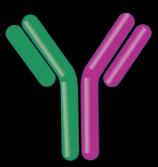
Bispecific antibody

MM cell death










BCMA

ABBV-383 (TNB-383B)
Alnuctamab
Linvoseltamab
GPRC5D Forimtamig (RG6234)
FcRH5
Cevostamab
BCMA = B-cell maturation antigen; FcRH5 = Fc receptor-homolog 5; IV = intravenous; FDA = US Food and Drug Administration; GPRC5D = G-protein coupled receptor family C group 5 member D;
MM = multiple myeloma; SC = subcutaneous.


O’Neill C, van de Donk NWCJ. EJHaem. 2023;4(3):811-822.Cho S-F, et al. Front Oncol. 2022;12:1032775. TECVAYLI® (teclistamab-cqyv) Prescribing Information. ELREXFIOTM (elranatamab-bcmm) Prescribing Information. TALVEY (talquetamab-tgvs) Prescribing Information.
98
Mechanism of Action for Bispecific Antibodies: -Cell Immune Activity Triggered Killing of Myeloma Cells
T cell MM cell Target on Myeloma Cells Bispecific Antibody Administration FDA Approval BCMA Teclistamab-cqyv SC October 2022 BCMA Elranatamab-bcmm SC August 2023
Talquetamab-tgvs SC August 2023
on MM cells
on Myeloma Cells
Antibody in Development
GPRC5D
Target
Target
Bispecific
Bispecific Antibody Clinical Pearls

• CRS and neurotoxicity management important for all bispecific antibodies
– More likely during step-up and early doses; unlikely later
• Particular AEs tend to be related to target; individualize support
• Assess care partner needs (formal or informal)
• Step-up dosing is specific to each bispecific antibody
– May need to repeat step-up dosing after a dose delay
• REMS program for each bispecific antibody:
– Prescribers and institutions must be certified
– Nurses must be trained on AE monitoring requirements
– Driving restrictions for patient during step-up dosing and if patient has neurologic AEs that would interfere with driving
– Start REMS training early
• Consider inpatient vs outpatient reimbursement

AE = adverse event; CRS = cytokine release syndrome; IV = intravenous; REMS = Risk Evaluation and Mitigation Strategy; SC = subcutaneous. IMF Nurse Leadership Board experience. TECVAYLI® (teclistamab-cqyv) Prescribing Information. ELREXFIOTM (elranatamab-bcmm) Prescribing Information. TALVEY (talquetamabtgvs) Prescribing Information.


99
Suggested Interventions With Grade 1 CRS Following Bispecific Antibody (Institution Specific)
• Administer tocilizumab 8 mg/kg IV
– May repeat dose up to 3 times; however, this patient cohort did not require additional doses
• Administer acetaminophen 1000 mg
• Monitor vital signs every 15 minutes until resolution
– If no improvement in 1 hour, consider administering steroids
• Until ruled out, manage for infection
– IV antibiotics
• IV fluids for hypotension
– Consider vasopressors if no resolution (Brudno JN, Kochenderfer JN. Blood Rev. 2019:34:45-55)
Order set in place at the time of bispecific administration
Nurses are trained to recognize symptoms
Nurses notify APP or MD, who authorizes release of the orders
Patients are admitted to the APP service for CRS management

100
APP = advanced practice provider; CRS = cytokine release syndrome; IV = intravenous. Catamero D, et al. Presented at: 20th International Myeloma Society (IMS) Annual Meeting Nurse Symposium. September 27-30, 2023; Athens, Greece.
Neurotoxicity

• Can occur:
– In the absence of CRS
– Concurrent with CRS
– More commonly, after CRS
• Considered to be a distinct process from CRS
• The exact mechanism of neurologic toxicity is not known
• Endothelial injury, possibly resulting from proinflammatory cytokines, may contribute
• Onset can vary widely and can be acute or chronic
– Short-term acute (eg, palsy) vs delayed onset (eg, lack of focus, or “chemo brain”)
• Toxicities tend to be self-limited and reversible
CRS = cytokine release syndrome.

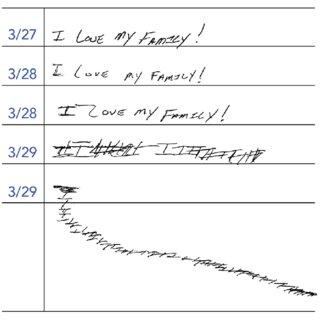
Lee DW, et al. Biol Blood Marrow Transplant. 2019;25:625-638. Brudno JN, Kochenderfer JN. Blood. 2016;127(26):3321-3330. Oluwole OO, Davila ML. J Leukoc Biol. 2016;100:12651272. June CH, et al. Science. 2018;359:1361-1365. Brudno JN, Kochenderfer JN. Blood Rev. 2019:34:45-55. Catamero D, et al. Presented at: 20th International Myeloma Society (IMS)

Meeting Nurse Symposium.
101
Annual
September 27-30, 2023; Athens, Greece.
Resources for Bispecific Antibodies

International Myeloma Foundation
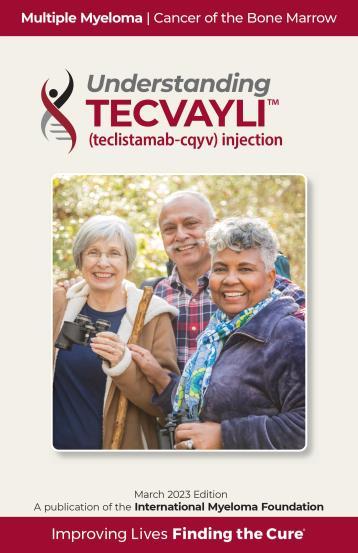

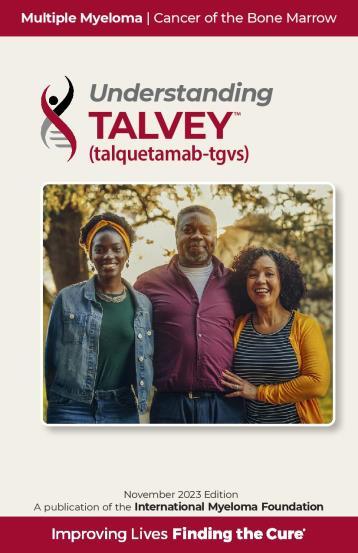

Prescribing Information and Drug-Specific Websites

International Myeloma Foundation Website. Accessed March 15, 2024. https://www.myeloma.org/publications-videos/download-our-publications/tip-cards.
NCCN Website. Accessed March 15, 2024. https://www.nccn.org/compendia-templates/compendia/drugs-and-biologics-compendia.

102
NCCN

Teclistamab: BCMA Directed Bispecific Antibody


• Bispecific antibody targeting BCMA
• SC administration
• Step-up dosing → weekly for 6 months → biweekly (every 2 weeks) after 6+ months for patients with a CR or better
• Recommended premedication:
– Corticosteroid (oral or IV dexamethasone 16 mg)
– Histamine-1 (H1) receptor antagonist (oral or IV diphenhydramine 50 mg or equivalent)
– Antipyretics (oral or IV acetaminophen 650 mg to 1000 mg or equivalent)
• Infection prophylaxis
• See prescribing information for dose modifications
– CRS, neurotoxicity, hematologic AEs, infections, other
– For restarting after dose delays (may need to repeat step-up dosing)
R/R MM after ≥ 4 lines of therapy (including a PI, an IMiD, and an anti-CD38 mAb) Dosing
Patients who have achieved and maintained a CR or better for a minimum of 6 months
Biweekly
The dosing frequency may be decreased to 1.5 mg/kg every 2 weeks
*May be given between 2 to 4 days after the prior step-up dose and up to 7 days after the prior step-up dose to allow for resolution of AEs
AE = adverse event; BCMA = B-cell maturation antigen; CR = complete response; CRS = cytokine release syndrome; IMiD = immunomodulatory

103
R/R
relapsed/refractory.
(teclistamab-cqyv) Prescribing Information.
drug; mAb = monoclonal antibody; MM = multiple myeloma; PI = proteasome inhibitor;
=
TECVAYLI®
Nurse Leadership Board.
Schedule Day Dose Step-up dosing schedule Day 1 Step-up dose 1 0.06 mg/kg Day 4* Step-up dose 1 0.3 mg/kg Day 7* First treatment dose 1.5 mg/kg Weekly dosing schedule One week after first treatment dose and weekly thereafter Subsequent treatment doses 1.5 mg/kg once weekly
Many institutions do step up doses every 48 hours



MajesTEC 1: Teclistamab in Patients With R/R MM
MajesTEC-1: Phase 1/2

• N = 165 patients with R/R MM with a median of 5 prior lines of therapy (no prior BCMA-directed)
– 100% triple-class exposed; 77.6% triple-class refractory
– 70.3% penta-drug exposed; 30.3% penta-drug refractory
• Median PFS: 11.3 months (95% CI, 8.8-17.1)
• Median DoR: 18.4 months (95% CI 14.9-NE)
• 46% MRD negative among pts with ≥CR
• Notable AEs
−
−
−
infection (grade 3 or 4, 44.8%)
CRS (grade 3, 0.6%; no grade 4)
anemia (grade 3 or 4, 37.0%)
− 40% thrombocytopenia (grade 3 or 4, 21.2%)
− 14.5% neurotoxic events (occurred in 24 patients, including ICANS in 5 patients [3.0%; all grade 1 or 2])
AE = adverse event; CR = complete response; CRS = cytokine release syndrome; DoR = duration of response; ICANS = immune effector cell–associated neurotoxicity syndrome; MM = multiple myeloma; MRD = minimal residual disease; NE = not estimable; ORR = overall response rate; PFS = progression free survival; PR = partial response; R/R = relapsed/refractory; sCR = stringent complete response; VGPR = very good partial response. Moreau P, et al.

0 20 40 60 80 100 Teclistamab ORR
104
Engl
Med. 2022;387(6):495-505. Patients (%) PR VGPR 63.0% CR sCR ≥ CR 39.4% ≥ VGPR 58.8%
N
J
76.4%
72.1%
70.9%
neutropenia (grade 3 or 4, 64.2%)
52.1%
WATCH FOR
Data from other MajesTEC clinical trials

Elranatamab: BCMA Directed Bispecific Approved for MM


• Bispecific antibody targeting BCMA
• SC administration
• Step-up dosing → weekly (for 24+ weeks) → biweekly (every 2 weeks) after 25 weeks for responders
• Recommended premedication:
– Acetaminophen (or equivalent) 650 mg orally
– Dexamethasone (or equivalent) 20 mg orally or IV
– Diphenhydramine (or equivalent) 25 mg orally
• See prescribing information for dose modifications
– For CRS, neurotoxicity, hematologic AEs, infections, other
– For restarting after dose delays (may need to repeat step-up dosing)
R/R MM after ≥ 4 lines of therapy (including a PI, an IMiD, and an anti-CD38 mAb)
AE = adverse event; BCMA = B-cell maturation antigen; CRS = cytokine release syndrome; IMiD = immunomodulatory drug; IV = intravenous; IVIG = intravenous immune globulin; mAb = monoclonal antibody; MM = multiple myeloma; PI = proteasome inhibitor; R/R =

105
ELREXFIOTM (elranatamab-bcmm) Prescribing Information. Dosing Schedule Day Dose Step-up dosing schedule Day 1 Step-up dose 1 12 mg Day 4 Step-up dose 2 32 mg Day 8 First treatment dose 76 mg Weekly dosing schedule One week after first treatment dose and weekly thereafter, through week 24 Subsequent treatment doses 76 mg 1× weekly Biweekly (every 2 weeks) for responders Week 25 and every 2 weeks thereafter Subsequent treatment doses 76 mg every 2 weeks
relapsed/refractory; SC = subcutaneous.



MagnetisMM 3: Elranatamab in Patients With R/R MM
MagnetisMM-3 Phase 2
• N = 123 patients with R/R MM with a median of 5 prior lines of therapy (no prior BCMA-directed)
– 100% triple-class exposed; 96.7% triple-class refractory
– 70.7% penta-drug exposed; 42.3% penta-drug refractory
Data from other MagnetisMM clinical trials
• Median PFS, median DoR, and OS have not been reached (median follow up 15.9 months)
• Notable AEs
− 69.9% infection (grade 3 or 4, 40.7%)
− 57.7% CRS grade 1 or 2 (no grade 3 or 4); median onset @ 2 days
− 48.8% anemia (grade 3 or 4, 37.4%)
− 48.8% neutropenia (grade 3 or 4, 48.8%)
31.7% thrombocytopenia (grade 3 or 4, 23.6%)
− 3.4% (4/119) ICANS grade 1 or 2 (no grade 3 or 4)
• 80% of pts who switched to biweekly dosing improved or maintained their response for ≥6 months
AE = adverse event; BCMA = B-cell maturation antigen; CR = complete response; CRS = cytokine release syndrome; DoR = duration of response; ICANS = immune effector cell–associated neurotoxicity syndrome; IMiD = immunomodulatory drug; mAb = monoclonal antibody; MM = multiple myeloma; ORR = overall response rate; OS = overall survival; PFS = progressionfree survival; PI = proteasome inhibitor; PR = partial response; R/R = relapsed/refractory; sCR = stringent complete response; VGPR = very good partial response. Lesokhin AM, et al. Nat Med. 2023;29(9):2259-2267. Tomasson MH, et al. ASH 2023. Abstr #3385.

0 20 40 60 80 100
Elranatamab ORR
106
VGPR CR 61.0% (95% CI 51.8-69.6) sCR ≥ CR 35.8% PR ≥ VGPR 56.1% Patients (%)
WATCH FOR

Type of Infection Risk

Medications Can Reduce Infection Risk (RECAP)

Medication Recommendation(s)
Viral: herpes simplex (HSV/VZV); CMV Acyclovir prophylaxis
Viral: influenza, COVID-19
Hepatitis B virus (HBV) reactivation
Bacterial: blood, pneumonia, and urinary tract infection
Pneumococcal infection
PJP (P jirovecii pneumonia)
Fungal infections
IgG < 400 mg/dL (general infection risk)
ANC < 1000 cells/μL (general infection risk)
Some people receiving bispecific antibody therapy have experienced infections that are less common, such as CMV, PJP, and fungal infections
Consider antiviral therapy if exposed or positive for influenza or COVID-19, per institution recommendations
Entecavir prophylaxis in patients positive for chronic HBV infection (defined as serologically positive for hepatitis B surface antigen [HBsAg]) if treated with CAR T, bispecific antibodies, or daratumumab
Consider prophylaxis with levofloxacin
The CDC recommends pneumococcal vaccination (1 dose of PCV20 or 1 dose of PCV 15 followed by 1 dose of PPSV23 at least one year later); CAR T or ASCT: revaccinate 3-6 months after treatment; Bispecific: Update vaccination status prior to starting therapy
Consider prophylaxis with trimethoprim-sulfamethoxazole
Consider prophylaxis with fluconazole
IVIG replacement (400 mg/kg once every 4 weeks) is indicated; IVIG replacement during CAR T-cell and bispecific antibody therapy is not guided by the presence of infectionsa
CAR T: Day +30 through 1 year. After 1 year continue until serum IgG > 400 mg/dL
Bispecific: start at the second cycle of therapy and continue until the end of therapy or serum IgG > 400
Consider GCSF 2 or 3 times/week (or as frequently as needed) to maintain ANC > 1000 cells/μL and treatment dose intensity; CAR-T: Start levofloxacin at 500 mg PO dailyb or per clinician discretion and continue through neutrophil recovery; Bispecific: consider starting with therapy and administer throughout the first cycle.
aIVIG is indicated in all patients with MM with IgG < 400 and recurrent life-threatening infections. bAlternatives: cefdinir 300 mg PO twice a day or amoxicillin/clavulanate 875 mg PO twice a day.
ANC = absolute neutrophil count; BCMA = B-cell maturation antigen; CMV, cytomegalovirus; GCSF = granulocyte colony-stimulating factor; HSV = herpes simplex virus; IgG = immunoglobulin G; IVIG = intravenous immunoglobulin; PJP = Pneumocystis jirovecii pneumonia; VZV = varicella zoster virus. Raje NS, et al. Lancet Haematol. 2022;9(2):143-161. NCCN Guidelines®. Multiple Myeloma. V3.2024. Accessed March 15, 2024. Cao W, et al. Blood. 2020;136(4):516-519.

107



Talquetamab: GPRC5D Directed Bispecific Antibody

• NEW target by bispecific antibodies: G protein-coupled receptor family C group 5 member D (GPRC5D), which has limited expression in normal human tissue but is highly expressed on malignant plasma cells
• SC administration
• Step-up dosing based on body weight →
– Weekly 0.4 mg/kg (doses at least 6 days apart) OR
– Biweekly (every 2 weeks) 0.8 mg/kg (at least 12 days apart)
• Recommended premedication:
– Corticosteroid (oral or intravenous dexamethasone, 16 mg or equivalent)
– Antihistamines (oral or intravenous diphenhydramine, 50 mg or equivalent)
– Antipyretics (oral or intravenous acetaminophen, 650 mg to 1000 mg or equivalent)
• See prescribing information for dose modifications
– For oral toxicity/weight loss, infections, cytopenias, skin reactions, other
– For restarting after dose delays (may need to repeat step-up dosing)

R/R MM after ≥ 4 lines of therapy (including a PI, an IMiD, and an anti-CD38 mAb)
Many institutions do step up doses every 48 hours
*May be given between 2 to 4 days after the prior step-up dose and up to 7 days after the prior step-up dose to allow for resolution of AEs

108
GPRC5D
G protein-coupled receptor, class C group 5 member D; IMiD = immunomodulatory drug; mAb = monoclonal antibody; MM = multiple myeloma; PI = proteasome inhibitor; R/R = relapsed/refractory; SC = subcutaneous. TALVEY (talquetamab-tgvs) Prescribing Information. Nurse Leadership
=
Board.
Dosing Schedule Day Dose Step-up dosing Day 1 Step-up dose 1 0.01 mg/kg Day 4* Step-up dose 2 0.06 mg/kg First weekly treatment dose OR step-up dose for biweekly Day 7* Weekly: first treatment dose Biweekly: step up dose 3* 0.4 mg/kg First biweekly dose Day 10* (only for biweekly dosing) Biweekly: first treatment dose 0.8 mg/kg



MonumenTAL 1: Talquetamab in Patients With R/R MM

MonumenTAL-1: Phase 1/2
– Patients with R/R MM received talquetamab IV or SC 0.4 mg/kg weekly (n=100) OR 0.8 mg/kg (n = 100) biweekly
– At least 3 prior lines of therapy (median ~6 prior lines of therapy (range 2-20); some with prior BCMA-directed bispecific or CAR T-cell therapy
– SC doses: Triple-class: 99% exposed, 97% refractory; penta-drug: 77% exposed, 25% refractory
• Median time to first response 1.2-1.3 months
• 72% ORR in Pts with prior T cell redirection therapy with at least 4 prior lines of therapy
• 40% ORR in pts with plasmacytomas (0.8 mg/kg biweekly SC dosing)
• Notable AEs
− 76% CRS (grade 3 in 1.5%, NO grade 4)
− 70% dysgeusia
− 50% nail-related (NO grade 3 or 4)
41% skin-related (grade 3, 0.3% NO grade 4)
Skin, nail, and taste changes are AEs associated with targeting GPRC5D
− 34% infections (grade 3 or 4, 7%) 0.8 mg/kg SC biweekly
− 9% ICANS
Talquetamab 0.8 mg/kg
aORR was similar for 0.4 mg/kg weekly dose at 70% (2/30).
− Most GPRC5D-related AEs trended toward improvement or resolution except for weight loss
AE = adverse event; CAR = chimeric antigen receptor; CR = complete response; CRS = cytokine release syndrome; GPRC5D = G protein-coupled receptor, class C group 5 member D; ICANS = immune effector cell–associated neurotoxicity syndrome; MM = multiple myeloma; ORR = overall response rate; PR = partial response; R/R = relapsed/refractory; SC = subcutaneous; sCR = stringent complete response; VGPR = very good partial response.

TALVEY (talquetamab-tgvs) Prescribing Information. Chari A, et al. N Engl J Med.
2022;387(24):2232-2244. Chari A, et al. ASH 2023. Abstr #1010.

0 20 40 60 80 100
109
ORR
PR
n=87 VGPR ≥ VGPR 58% sCR
74%
33%
≥ CR
Patients (%) CR
a
Management of Oral Toxicities
Clinical Pearl: If patients are not tolerating due to oral toxicities, have a low threshold for dose reduction or dosing interval
EARLY initiation of nystatin or clotrimazole is key to managing symptoms. Dexamethasone oral solutions “swish and spit” have been tried but with no proven benefit yet. Sour citrus or candies before meals are recommended.
Dry Mouth
OTC dry mouth rinse, gel, spray are recommended. Advise patients to avoid hot beverages.
• Weight loss and anorexia are associated with taste changes. Nutritionist involvement and dietary modifications are recommended to support patients. An appetite stimulant with dronabinol, if indicated, can also be utilized.
Dysphagia
Dietary modifications, including taking small bites, eating upright, and sips of beverage with food, can help manage symptoms.
• Education and emotional support are key strategies for managing oral toxicities.

Taste Changes Glossitis and Thrush
Catamero D, et al. Presented at: 20th International Myeloma Society (IMS) Annual Meeting Nurse Symposium. September 27-30, 2023; Athens, Greece. Chari A, et al. ASH 2023. Abstr #1010.
110
Examples of Skin/Nail AEs With Talquetamab
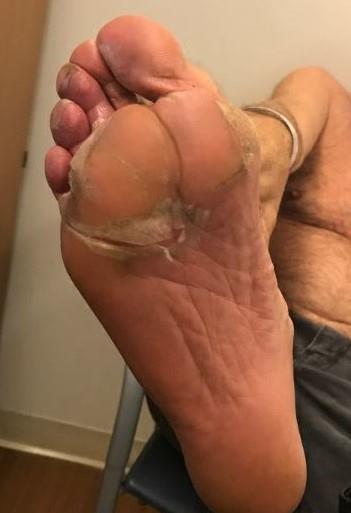


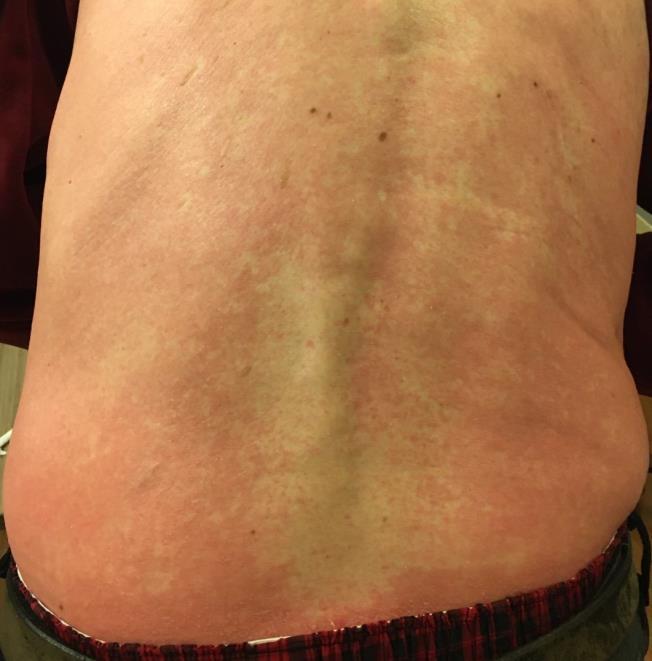



111
AE = adverse event. 111
Photos: Mount Sinai Hospital, NY, NY
Management of Dermatologic AEs
Dry Skin
Heavy moisturizers
Pruritus
Clinical Pearl: dermatologic AEs can be difficult to manage; dose adjustment may be needed
Hand and/or Foot Peeling
Ammonium lactate 12% lotion to soles and palms twice daily
Injection Site Reaction
Loratadine 10 mg by mouth daily for 3 to 5 days after talquetamab dose and triamcinolone 0.1% cream twice daily
Nail Thinning and Peeling
Nail hardeners, topical vitamin E oil, and triamcinolone 0.025% ointment
Body Rash/ Drug Rash
Above, plus consider methylprednisolone taper and betamethasone 0.05% cream twice daily
• Consider dose HOLD for other grade 3 dermatologic AEs
• Dermatology consults may be helpful as an early strategy
• With experience, dermatologic AEs can be managed more easily than oral AEs
• These interventions were successful at reducing or resolving dermatologic AEs
AE = adverse event. Catamero

D, et al. Presented at: 20th International Myeloma Society (IMS) Annual Meeting Nurse Symposium. September 27-30, 2023; Athens, Greece.
112
Teclistamab + Talquetamab Combination in Development
Study Design: Phase 1b
• Tec 3.0 mg/kg Q2W + Tal 0.8 mg/kg Q2W (n = 34)
• All had exposure to PI, IMiD, anti-CD 38 mAb
• 32% with extramedullary disease
Results
• AE profile was consistent with both monotherapy profiles
– 65% any-grade neutropenia (61.3% grade 3/4)
– 73.5% grade 1/2 CRS (NO grade 3 or 4)
– 5 ICANS events in 3/93 patients
– 8.8% febrile neutropenia
– 47.1% dysgeusia
– 52.9% skin toxicity
– 41% nail disorders
AE = adverse event; CR = complete response; CRS = cytokine release syndrome; ICANS = immune effector cell–associated neurotoxicity syndrome; IMiD = immunomodulatory drug; mAb = monoclonal antibody; ORR = overall response rate; PI = proteasome inhibitor; PR = partial response; Q2W = every 2 weeks; sCR = stringent complete response; Tal = talquetamab; Tec = teclistamab; VGPR = very good partial response. Mateos M-V, et al. EHA 2023. Abstr #S190. RedirecTT-1 (MMY1003) Study - TECVAYLI and TALVEY Cohort. Accessed March 27, 2024. https://www.janssenscience.com/products/talvey/medical-content/redirectt1-mmy1003-study-tecvayli-and-talvey-cohort.

Patients with extramedullary disease

0 20 40 60 80 100 Percent of Patients
113
ORR in Patients Treated With Tec 3.0 mg/kg Q2W + Tal 0.8 mg/kg Q2W
WATCH FOR New combination regimens with bispecific antibodies in clinical trials All patients ≥CR 40.7% ≥CR 28.6% 96.3% (26/27) 85.7% (26/27)
VGPR sCR CR PR VGPR CR
PR
Case Study: Teclistamab + Talquetamab Combination


114
ASCT = autologous stem cell transplant; LOT = line of therapy; RT = radiotherapy. Mateos M-V, et al. EHA 2023. Abstr #S190.





Sequencing: BCMA directed and GPRC5D directed Bispecifc

Antibodies Are Both Active Post BCMA directed CAR T




“This analysis indicates that sequencing BsAbs and CAR -T cell therapy after previous BCMAtargeted treatments offers meaningful clinical benefit with durable response rates in patients who have few other options.”
“Changing targets after relapse from a BCMA—targeted therapy (e.g., switching to a GPRC5D— targeted therapy) appears to work well.”
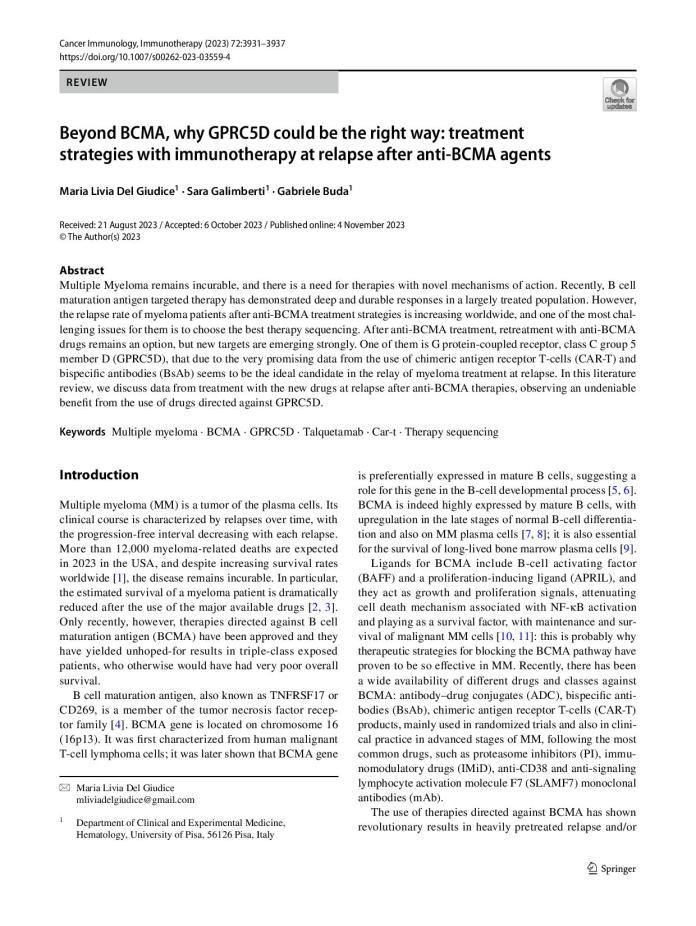

115
Patel U, et al. ASCO 2023. Abstr #e20049. Mouhieddine TH, et al. Blood Adv. 2023;7(6):1056-1064. Del Giudice ML, et al. Cancer Immunol Immunother. 2023;72(12):3931-3937.



IMWG Immunotherapy Registry: Real World Research to Answer Questions About Sequencing MM Therapies
• Real-world data from IMWG
• Prospectively follow 6000 participants, including “controls”
• Collect risk status, lines of therapy, drug exposure and refractoriness
• Evaluate sequencing of immunotherapies
• Asses global differences in practice patterns
• Analyze treatment response, toxicities, and outcomes

IMWG = International Myeloma Working Group; MM = multiple myeloma.
The IMF’s Immune Therapy Registry. Accessed March 27, 2024. https://www.myeloma.org/international-myeloma-working-group/imfs-immune-therapy-registry.

116
CASE 2 Continued
*HIPAA-compliant, not actual patient name, stock photo.
MARGARET*

PATIENT NOTES
70 years old woman; diagnosed with high-risk MM in 2016 at age 63 years

Treatment History
• VRd→ASCT→R maintenance
• Carfilzomib lenalidomide dexamethasone
• Daratumumab pomalidomide dexamethasone
• Ixazomib pomalidomide dexamethasone
• Selinexor bortezomib dexamethasone (pre-CAR T)
• CAR T-cell therapy (BCMA-directed)
November 2023
• Symptomatic relapse
• Shared decision-making: talquetamab



ASCT
HIPAA = Health
Portability and Accountability Act; MM = multiple myeloma; R = lenalidomide; VRd = bortezomib lenalidomide dexamethasone. 117
= autologous stem cell transplant; BCMA = B-cell maturation antigen; CAR = chimeric antigen receptor;
Insurance
CASE 3
*HIPAA-compliant, not actual patient name, stock photo.

ROBERT*
• 72-year-old man, diagnosed with standard-risk MM in 2015 at age 63 years
TREATMENT HISTORY

Treatment History
• VRd then transplant + R maintenance (2 years)
• Carfilzomib/pomalidomide/dexamethasone
• Elotuzumab/lenalidomide/dexamethasone
• Daratumumab/pomalidomide/dexamethasone
January 2023 (71 Years Old)
• Symptomatic relapse
• Shared decision-making: elranatamab



118
HIPAA = Health Insurance Portability and Accountability Act; MM = multiple myeloma; R = lenalidomide; VRd = bortezomib lenalidomide dexamethasone.
Clinical Trials: The Reason We Have So Many Therapies for MM
Preclinical
ANIMAL STUDIES: Examine safety and potential for efficacy
PHASE 1
FIRST INTRODUCTION OF AN INVESTIGATIONAL DRUG INTO HUMANS
• Determine metabolism and PK/PD actions, MTD, and DLT
• Identify AEs
• Gain early evidence of efficacy, studied in many conditions; typically, 20 to 80 patients; everyone gets agent
PHASE 2
EVALUATION OF EFFECTIVENESS IN A CERTAIN TUMOR TYPE
• Determine short-term AEs and risks; closely monitored
• Includes up to 100 patients, typically
PHASE 3
GATHER ADDITIONAL EFFECTIVENESS AND SAFETY INFORMATION COMPARED TO STANDARD OF CARE
• Placebo may be involved if no standard of care exists; hundreds to several thousand patients
• Often multiple institutions; single or double blind; sometimes open label
PHASE 4
APPROVED AGENTS IN NEW POPULATIONS OR NEW DOSE FORMS

AE = adverse event; DLT = dose-limiting toxicity; MTD = maximum tolerated dose; PD = pharmacodynamics; PK = pharmacokinetics. Faiman B, et al. Adv Pract Oncol. 2016;7:17-29.
119
Importance of Participation by Diverse Populations in Clinical Trials

[P]eople from racial and ethnic minorities and other diverse groups are underrepresented in clinical research. This is a concern because people of different ages, races, and ethnicities may react differently to certain medical products.
– FDA

Leadership and commitment
Investigator hiring, training, and mentoring practices
Community engagement practices
US Cancer Centers of Excellence Strategies for Increased Inclusion of Racial and Ethnic Minorities in Clinical Trials
Patient engagement practices
FDA = US Food and Drug Administration. Regnante JM, et al. J Oncol Pract. 2019;15(4):e289-e299. FDA website. Clinical Trial Diversity. Accessed March 27, 2024. https://www.fda.gov/consumers/minority-health-and-healthequity/clinical-trial-diversity.

120
Clinical Trial Myths: Importance of Dispelling Inaccuracies
MYTH: If I participate in a clinical trial, I might get a placebo, not active treatment
MYTH: If I participate in a clinical trial, I can’t change my mind
MYTH: Patients (whatever demographic/ distance from clinic/etc) never participate in clinical trials so I won’t mention it
• Phase 1 and 2, everyone gets active treatment
• Phase 3 standard of care vs new regimen: often standard regimen with/without additional agent in MM trials
• Patients can withdraw their consent for clinical trial participation at any time
MM = multiple myeloma.
MYTH: Clinical trials are dangerous because they have new medicines and practices
• Mention the option and give the patient the opportunity; implicit and explicit biases can limit participation
• Some groups may need more information about clinical trials to feel comfortable with participation
• Some risk is involved with every treatment, but medicines are used in clinical trials with people only after they have gone through testing to indicate that the drug is likely to be safe and effective for human use
MYTH: Clinical trials are expensive and not covered by insurance
• Research costs are typically covered by the sponsoring company
• Standard patient care costs are typically covered by insurance
• Check with clinical trial team/insurers; costs such as transportation, hotel, etc may not be reimbursed and are paid by patient
PhRMA website. Accessed March 25, 2024. https://phrma.org/-/media/Project/PhRMA/PhRMA-Org/PhRMA-Org/PDF/A-C/CLINICAL-TRIALS-MYTH-FACTPRINT.pdf?hsCtaTracking=f6689b95-1626-40d9-8c87-c6b8d31600a4%7C35221aa8-d487-4db3-9416-b9c3c35e3bac.

121
Resources to Find Clinical Trials and Avoid Bias
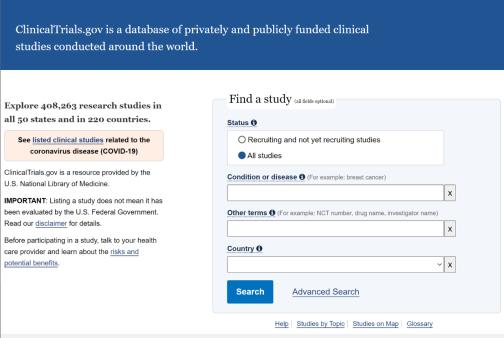
Clinicaltrials.gov
https://clinicaltrials.gov/


Just ASKTM Implicit Bias Training from Association of Community Cancer Centers website. Accessed March 15, 2024. https://www.accccancer.org/home/attend/webinartemplate/2022/07/25/on-demand/justask-increasing-diversity-in-cancer-clinicalresearch
IMF Infoline US & Canada: 800-452 CURE (2873)
Worldwide: 1-818-487-7455
infoline@myeloma.org

122
Therapies in Development for Treatment of Multiple Myeloma

CELMoD agents
• Iberdomide (cereblon E3 ligase)
• Mezigdomide (cereblon E3 ligase)

Antibody-drug conjugates
• Belantamab mafodotin (BCMA)
• STRO-001 (CD74)
• STI-6129 (CD38)
• CC-99712 (BCMA)
CAR T-cell therapies
• BMS-986393 (GPRC5D)
• CB-011 (BCMA)
• CART-ddBCMA (BCMA)
• P-BCMA-101 (BCMA)
• PHE885 (BCMA)
• GC012F (BCMA and CD19)






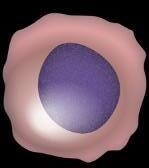











CAR NK cells
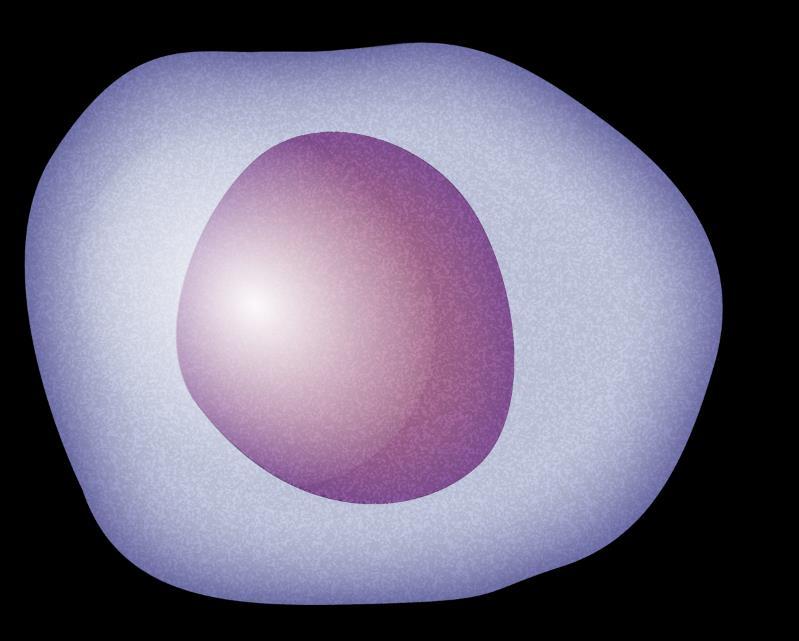




Monoclonal antibodies
Felzartamab (CD38)
BCL-2 inhibitor
• Lisaftoclax








Bispecific antibodies
• ABBV-383 (BCMA)


• Alnuctamab (BCMA)
• Linvoseltamab (BCMA)
• Cevostamab (FcRH5)
• Forimtamig (GPRC5D)
BCL-2 = B-cell lymphoma 2; BCMA = B-cell maturation antigen; CAR = chimeric antigen receptor; = cereblon E3 ligase modulator; FcRH5 = Fc receptor-homolog 5; GPRC5D = G-protein coupled receptor family C group 5 member D; HPC = hematopoietic progenitor cell; MM = multiple myeloma; NK = natural killer. O’Neill C, van de Donk NWCJ. EJHaem. 2023;4(3):811-822. Hartley-Brown M, Richardson P. 2022;3(1):1-10. Ray U, Orlowski RW. Pharmaceuticals (Basel). 2023;16(4):590. Vu SH, et al. Front Oncol. 2023; 13: 1275076. Frigault MJ, et al. Blood Adv. 2023;7(5):768-777. van de Donk NWCJ, et al. ASH 2023. Abstr #208. Richardson PG, et al. ASH 2023. Abstr #1013. Chiu H, et al. ASH 2023. Abstr #335. Bal S, et al. ASH 2023. Abstr #219.

123
T cell T cell CAR NK cell CAR T cell Plasma cell Immune cells
Iberdomide + Dexamethasone in R/R MM With Prior BCMA Therapy Exposure

• Mechanism: greater tumoricidal and immune-stimulatory effects compared with IMiDs; marked synergy with dexamethasone and other antimyeloma therapies in preclinical models
• Patients with R/R MM ≥ 3 lines of therapy (including IMiDs, a PI, an anti-CD38 mAb, and an anti-BCMA therapy) and progressive disease ≤ 60 days after last therapy* (n = 38)
– Reference ORRs in similar populations: CAR T-cell therapy 36.8%; antibody-drug conjugate 34.2%; T-cell engager 13.7%; other 10.5%
• Clinical trials with iberdomide
• Combinations with iberdomide
Iberdomide showed encouraging activity and safety in patients with triple-class-exposed R/R MM and prior anti-BCMA therapy
• Median DoR: 7.5 months (95% CI 3.2-not reached)
• Median PFS: 2.4 months (95% CI 3.2-6.3)
• Hematologic toxicities
• Low rate of grade 3/4 nonhematologic toxicities
• No discontinuations due to treatment-emergent AEs Patients (%)
*Documented progressive disease if CAR T-cell therapy was the last therapy.
AE = adverse event; BCMA = B-cell maturation antigen; CAR = chimeric antigen receptor; CR = complete response; DoR = duration of response; IMiD = immunomodulatory drug; mAb = monoclonal antibody; MM = multiple myeloma; ORR = overall response rate; PFS = progression-free survival; PI = proteasome inhibitor;
PR = partial response; R/R = relapsed/refractory; VGPR = very good partial response.
Lonial S, et al. ASH 2022. Abstr #1918.

124
0 20 40 Iberdomide ORR
PR
CR VGPR WATCH FOR
36.8%




Mezigdomide (MEZI), a Novel Oral CELMoD With Promising Activity
• Mechanism: enhanced tumoricidal and immune-stimulatory effects compared to IMiDs. MEZI induced maximal degradation of Ikaros and Aiolos, leading to increased apoptosis in myeloma cells
• Patients with R/R MM treated with MEZI + dexamethasone (n = 101)
– ≥ 3 prior lines of therapy; progression ≤ 60 days of last myeloma therapy
– Refractoriness to IMiDs, a PI, a glucocorticoid, and an anti-CD38 mAb 0 20
60
40

WATCH FOR
• Combinations with mezigdomide
• Evidence that mezigdomide reverses T-cell exhaustion
MEZI showed promising activity in heavily pretreated patients with MM
• Preliminary median DoR: 8.3 months (95% CI 5.4-not reached)
• Median PFS: 4.6 months (95% CI 3.2-6.3)
• ORR in patients with prior anti-BCMA therapy: 50% (n = 30)
• Hematologic toxicities
• Low rate of grade 3/4 nonhematologic toxicities: gastrointestinal disorders (5.9%), fatigue (4.0%), and rash (1.0%)
• 5.9% discontinuation due to treatment-emergent AEs
AE = adverse event; BCMA = B-cell maturation antigen; CELMoD = cereblon E3 ligase modulator; CR = complete response; DoR = duration of response; IMiD = immunomodulatory drug; Kd = carfilzomib dexamethasone; mAb = monoclonal antibody; MEZI = mezigdomide; MM = multiple myeloma; ORR = overall response rate; PI = proteasome inhibitor; PR = partial response; R/R = relapsed/refractory; sCR = stringent complete response; Vd = bortezomib dexamethasone; VGPR = very good partial response. Richardson PG, et al. ASH 2022. Abstr #568. Chiu H, et al. ASH 2023. Abstr #335.

Mezigdomide ORR
Patients (%) PR 39.6% CR 125
sCR VGPR
Summary



Bispecific antibodies act as a bridge between T cells and myeloma cells to use a patient’s immune system to target myeloma. Teclistamab, elranatamab, and talquetamab are currently FDA approved; more are in development.
Optimal sequencing of MM therapies is evolving. The IMF immunotherapy registry attempts to answer questions of sequencing using real-world data.

CRS, neurotoxicity, and hematological toxicities are important AEs for all bispecific antibodies.
Many new drugs are in development with different targets, including CELMoD agents, monoclonal antibodies, bispecific monoclonal antibodies (T-cell engagers), and antibody-drug conjugates.
BCMA-directed bispecific antibodies carry heightened infection risk. GPRC5D-directed bispecific antibodies carry the possibility of skin, nail, and oral AEs.
Clinical trial participation by diverse populations is essential to ensure that new drugs are appropriate for diverse populations.
AE = adverse event; BCMA = B-cell maturation antigen; CAR = chimeric antigen receptor; CRS = cytokine release syndrome; CELMoD = cereblon E3 ligase modulator; FDA = US Food and Drug Administration; GPRC5D = G-protein coupled receptor family C group 5 member D; IMF = International Myeloma Foundation; MM = multiple myeloma. O’Neill C, van de Donk NWCJ. EJHaem. 2023;4(3):811-822. Cho S-F, et al. Front Oncol. 2022;12:1032775. TECVAYLI® (teclistamab-cqyv) Prescribing Information. ELREXFIOTM (elranatamab-bcmm) Prescribing Information. TALVEY (talquetamab-tgvs) Prescribing Information. Catamero D, et al. Presented at: 20th International Myeloma Society (IMS) Annual Meeting Nurse Symposium. September 27-30, 2023; Athens, Greece. Patel U, et al. ASCO 2023. Abstr #e20049. Mouhieddine TH, et al. Blood Adv. 2023;7(6):1056-1064. Del Giudice ML, et al. Cancer Immunol Immunother. 2023;72(12):3931-3937. The IMF’s Immune Therapy Registry. Accessed March 27, 2024. https://www.myeloma.org/international-myeloma-working-group/imfs-immune-therapy-registry. Catamero D, et al. J Adv Pract Oncol. 2022;13(suppl 4):31-43. O’Neill C, van de Donk NWCJ. EJHaem. 2023;4(3):811-822. Hartley-Brown M, Richardson P. Explor Target Antitumor Ther. 2022;3(1):1-10. Ray U, Orlowski RW. Pharmaceuticals (Basel). 2023;16(4):590. Vu SH, et al. Front Oncol. 2023; 13: 1275076. Frigault MJ, et al. Blood Adv. 2023;7(5):768-777. van de Donk NWCJ, et al. ASH 2023. Abstr #208. Richardson PG, et al. ASH 2023. Abstr #1013. Chiu H, et al. ASH 2023. Abstr #335. Regnante JM, et al. J Oncol Pract. 2019;15(4):e289-e299. FDA website. Clinical Trial Diversity. Accessed March 27, 2024. https://www.fda.gov/consumers/minority-health-and-health-equity/clinical-trial-diversity.

126




127
HIPAA = Health Insurance Portability and Accountability Act.
Thank You For Sharing in the Stories of Our Patients *HIPAA-compliant, not actual patient name, stock photo.
MARGARET* CARL* ROBERT*
Learning Objectives

As a result of this program, you will be able to:
Discuss new and emerging therapies, including CELMoDs®, CAR-T cell therapy, and T-cell engagers, such as bispecific antibodies, for patients with multiple myeloma, as well as AE management and patient education
Explain the importance of sequencing therapy, including the use of multidrug regimens and bridging therapy
Use strategies to support the attainment of deep responses by patients with myeloma, such as new therapies, multidrug regimens, ASCT, maintenance, adherence, shared decision-making, MRD, and other testing
Summarize disparities faced by patients with multiple myeloma and strategies to overcome these (health equity)
Use patient and care partner’s (caregiver’s) input in treatment decisions through shared decision-making

128
AE = adverse event; ASCT = autologous stem cell transplant; CAR = chimeric antigen receptor; CELMoD = cereblon E3 ligase modulatory drug; MRD = minimal residual disease.
Q1. Which of the following is TRUE about multiple myeloma (MM) in Black vs White patients?



1. Black patients tend to be diagnosed with myeloma at an older age
2. Black patients of African descent tend to have higher-risk disease
3. Black patients with MM have similar rates of mortality compared with White patients
4. Black patients may have superior outcomes when treated with standard-of-care
5. I don’t know

129
Q1. Which of the following is TRUE about multiple myeloma (MM) in Black vs White patients?

1. Black patients tend to be diagnosed with myeloma at an older age
2. Black patients of African descent tend to have higher-risk disease
3. Black patients with MM have similar rates of mortality compared with White patients
4. Black patients may have superior outcomes when treated with standard-of-care
5. I don’t know

130
Q2. Which of the following is TRUE about strategies to attain deep minimal residual disease (MRD) negative responses to treatment in multiple myeloma (MM)?
1. Patients who achieve MRD-negative status do not relapse
2. Multidrug regimens produce higher MRD-negative rates than doublet regimens
3. Autologous stem cell transplant (ASCT) is no longer recommended as a strategy to achieve MRD-negative responses
4. A shorter duration of therapy with higher doses of chemotherapy will lead to deeper MRD-negative response rates
5. I don’t know

131
Q2. Which of the following is TRUE about strategies to attain deep minimal residual disease (MRD) negative responses to treatment in multiple myeloma (MM)?
1. Patients who achieve MRD-negative status do not relapse
2. Multidrug regimens produce higher MRD-negative rates than doublet regimens
3. Autologous stem cell transplant (ASCT) is no longer recommended as a strategy to achieve MRD-negative responses
4. A shorter duration of therapy with higher doses of chemotherapy will lead to deeper MRD-negative response rates
5. I don’t know

132
Q3. Which of the following is TRUE about sequencing and CAR T cell therapy for multiple myeloma (MM ?



1. A new line of therapy is defined as the discontinuation of 1 treatment regimen due to progression and the start of another therapy
2. Patients must have been treated with a proteasome inhibitor (PI) and immunomodulatory drug (IMiD) before CAR T-cell therapy
3. CAR T cell therapies are indicated for patients with MM only after 3 or more prior lines of therapy
4. Patients treated with a bispecific antibody are not eligible to receive CAR T-cell therapy
5. I don’t know

133
Q3. Which of the following is TRUE about sequencing and CAR T cell therapy for multiple myeloma (MM)?
1. A new line of therapy is defined as the discontinuation of 1 treatment regimen due to progression and the start of another therapy
2. Patients must have been treated with a proteasome inhibitor (PI) and immunomodulatory drug (IMiD) before CAR T-cell therapy
3. CAR T cell therapies are indicated for patients with MM only after 3 or more prior lines of therapy
4. Patients treated with a bispecific antibody are not eligible to receive CAR T-cell therapy
5. I don’t know

134
Q4. Which of the following is TRUE about bispecific antibody therapies for multiple myeloma (MM)?

1. Skin and nail toxicities are common AEs experienced by patients receiving a BCMA-targeted bispecific antibody
2. Cytokine release syndrome (CRS) can occur in CART-cell therapy but does not occur in patients treated with bispecific antibodies
3. Patients are not eligible for a BCMA-directed bispecific antibody after a BCMA-directed CAR T-cell therapy
4. Atypical infections such as CMV, PJP, and fungal infections may occur at higher rates in patients receiving bispecific therapies for MM compared with standard therapy
5. I don’t know

135
Q4. Which of the following is TRUE about bispecific antibody therapies for multiple myeloma (MM)?

1. Skin and nail toxicities are common AEs experienced by patients receiving a BCMA-targeted bispecific antibody
2. Cytokine release syndrome (CRS) can occur in CART-cell therapy but does not occur in patients treated with bispecific antibodies
3. Patients are not eligible for a BCMA-directed bispecific antibody after a BCMA-directed CAR T-cell therapy
4. Atypical infections such as CMV, PJP, and fungal infections may occur at higher rates in patients receiving bispecific therapies for MM compared with standard therapy
5. I don’t know

136
Remember the Resources to Enhance Your Ability to Care for Your Patients With MM
https://imf-ons.myeloma.org/ password: ons2024




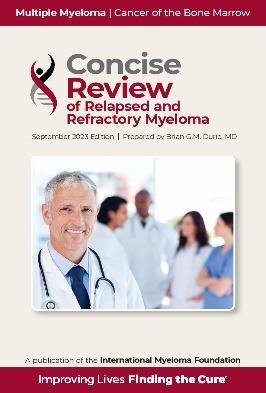
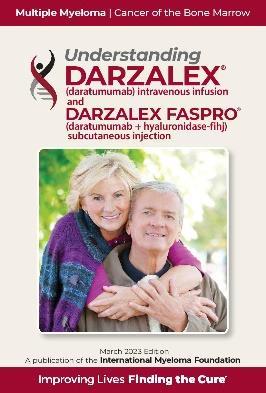
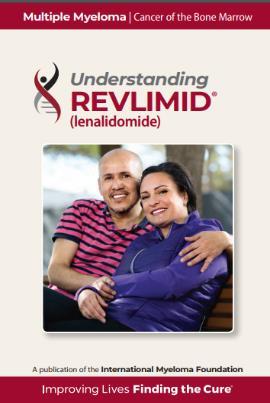
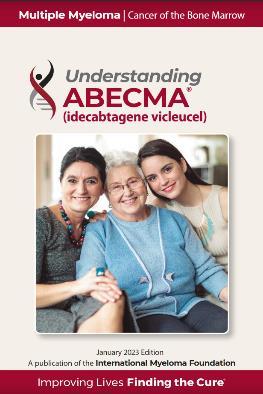


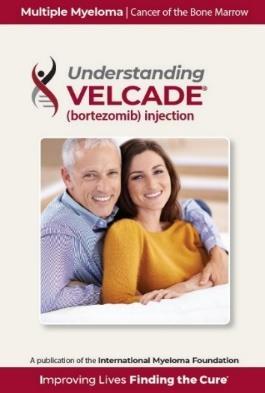

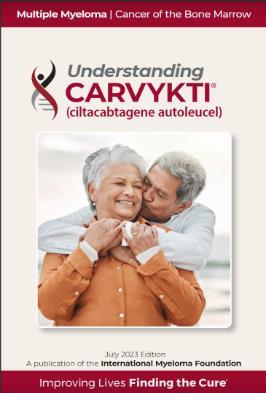




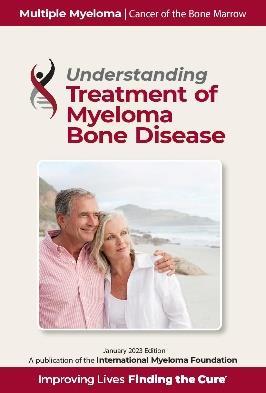


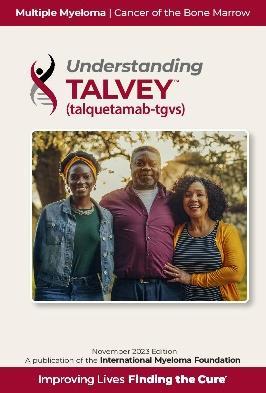




MM = multiple myeloma.

137
Thank You for Your Attendance and Participation
On behalf of the IMF with the generous support from AbbVie, Inc.; Bristol Myers Squibb Company; Janssen Biotech, Inc., administered by Janssen Scientific Affairs, LLC; Karyopharm Therapeutics; Pfizer Inc.; and Sanofi, we thank you.
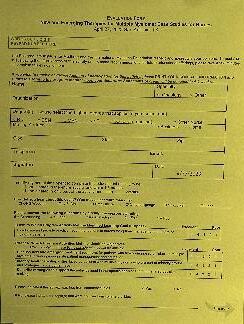
Don’t forget to turn in your YELLOW eval for CNE credit
Please Contact IMF for Further Information and Resources:
1-800-452-CURE
(1-800-452-2873)
TheIMF@myeloma.org
http://myeloma.org
Slides and Resources available at:
http://imf-ons.myeloma.org
Password: ons2024


138
IMF = International Myeloma Foundation.























































































































































































































































































































































































































































